- Ebooks & Courses
- Practice Tests

How To Write an IELTS Line Graph Essay
Here is the 5 steps process I recommend for planning and writing IELTS line graph essays:
1) Analyse the question
2) Identify the main features
3) Write an introduction
4) Write an overview
5) Write the details paragraphs
I’m going to take you through the whole process step-by-step as we work on a practice question.
Many students are reluctant to spend time on steps 1 and 2 as they want to spend as much of the 20 minutes allowed for the essay as possible actually writing it. However, it is essential that you do them as they are the key to writing a high-scoring IELTS line graph essay.
Before we begin, here’s a model essay structure that you can use as a guideline for all IELTS Academic Task 1 questions.
Ideally, your essay should have 4 paragraphs:
Paragraph 1 – Introduction
Paragraph 2 – Overview
Paragraph 3 – 1 st main feature
Paragraph 4 – 2 nd main feature
Now that we have all these tools we need, we’re ready to begin planning and writing our IELTS line graph essay.
Here’s our practice question:
The graph below shows radio and television audiences throughout the day in 1992.
Summarise the information by selecting and reporting the main features, and make comparisons where relevant.
Write at least 150 words.
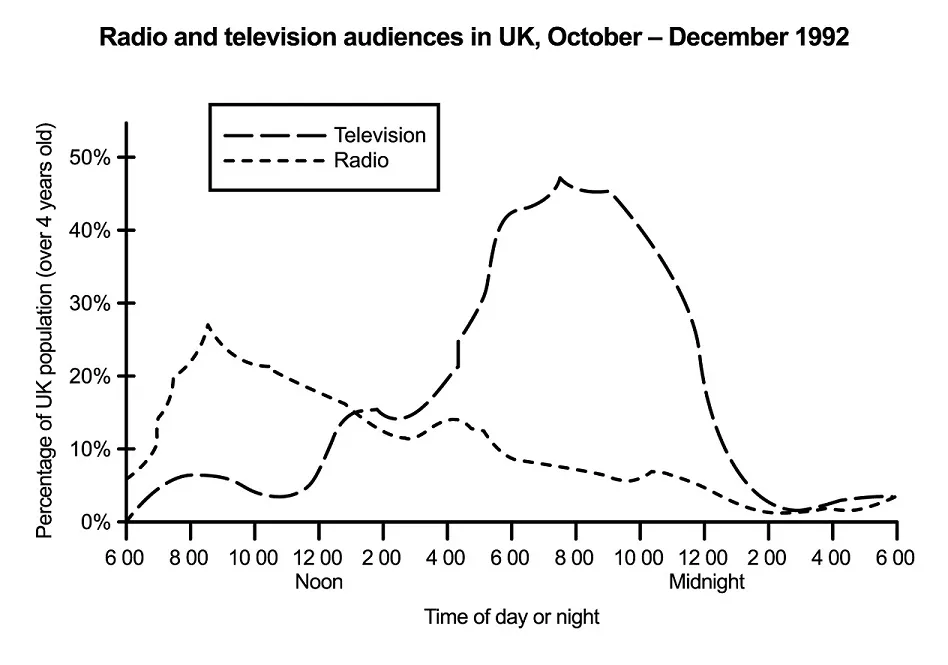
Source: Official IELTS website
Step 1 – Analyse the question
The format of every Academic Task 1 question is the same. Here is our practice question again with the words that will be included in all questions highlighted .
The graph below shows radio and television audiences throughout the day in 1992.
Every question consists of:
- Sentence 1 – A brief description of the graphic
- Sentence 2 – The instructions
- The graphic – chart, graph, table, etc.
Sentence 2 tells you what you have to do.
You must do 3 things:
1. Select the main features.
2. Write about the main features.
3. Compare the main features.
All three tasks refer to the ‘ main features ’ of the graphic. You do not have to write about everything. Just pick out 2 or 3 key features and you’ll have plenty to write about.
Step 2 – Identify the Main Features
The graphic in IELTS line graph questions should not be difficult to interpret. Each question has been created to test your language skills, not your mathematics ability.
All you are looking for are the main features. These will usually be the easiest things to spot. There will be lots of information in the graphic to help you identify them.
Here are some useful questions to ask?
- What information do the 2 axes give?
- What are the units of measurements?
- What are the time periods?
- What can you learn from the title and any labels?
- What is the most obvious trend?
- Are there any notable similarities?
(I give more detail on how to use these questions, plus downloadable checklists for identifying the main features of all 7 different types of IELTS Academic Writing Task 1 questions, in the lesson on How To Understand & Analyse Task 1 Questions .)
So, what main features stand out in our practice graphic?
Here's our IELTS line graph again.

The timeline will give you the biggest clues as to the most significant trends. Look for general trends.
There are 2 main features/trends in this line graph:
Main feature 1: The peak time for TV audiences is in the evening (8 pm).
Main feature 2: The peak time for radio audiences is in the morning (8 am).
The general trends you select will be the starting point for your essay. You will then go on to add more detail. However, with just 20 minutes allowed for Task 1, and a requirement of only 150 words, you won't be able to include many details.
We’re now ready to begin writing our essay. Here’s a reminder of the 4 part structure we’re going to use.
Step 3 – Write an Introduction
In the introduction, you should simply paraphrase the question, that is, say the same thing in a different way. You can do this by using synonyms and changing the sentence structure. For example:
Introduction (Paragraph 1):
The line graph illustrates the proportion of people in the UK who watched TV and listened to the radio over 24 hours from October to December 1992.
This is all you need to do for the introduction.
Step 4 – Write an Overview (Paragraph 2)
In the second paragraph, you should report the main features you can see in the graph, giving only general information. The detail comes later in the essay. You should also make any clear comparisons you spot.
This is where we write about the general trends. Here are the ones we picked out above.
Now form these ideas into two or three sentences with a total of around 40 words. State the information simply using synonyms where possible. No elaborate vocabulary or grammar structures are required, just the appropriate words and correct verb tenses.
For example:
Overview (Paragraph 2):
Overall, a significantly greater percentage of the TV audience watched in the evening while radio had the most listeners in the morning. Over the course of each day and night, more people watched TV than listened to the radio.
Step 5 – Write the 1st Detail Paragraph
Paragraphs 3 and 4 of your IELTS line graph essay are where you include more detailed information about the data in the graphic. In paragraph 3, you should give evidence to support your first key feature. Don’t forget to make comparisons when relevant.
Here is our first main feature again:
And this is an example of what you could write:
Paragraph 3 :
Less than 10% of people watched TV between 1 am and 12 noon but at 4 pm this figure increased rapidly, reaching a peak of almost half the population at 8 pm. After this, the graph records a sharp decline in viewers, reaching a low of only a tiny percentage by 3 am.
Step 6 – Write the 2nd Detail Paragraph
For the fourth and final paragraph, you do the same thing for your second key feature.
Here’s an example of what you could write:
Paragraph 4 :
Radio, on the other hand, shows a very different trend. The most popular time for listeners to be tuned in was just after 8 am when around 27% of the population was listening. After a brief peak, the numbers dropped steadily to barely 2%, apart from fluctuations at around 4 pm and 10.30 pm. The percentage of listeners remained low overnight before beginning a rapid ascent from 6 am to the 8 am high.
Here are the four paragraphs brought together to create our finished essay.
Finished IELTS Line Graph Essay
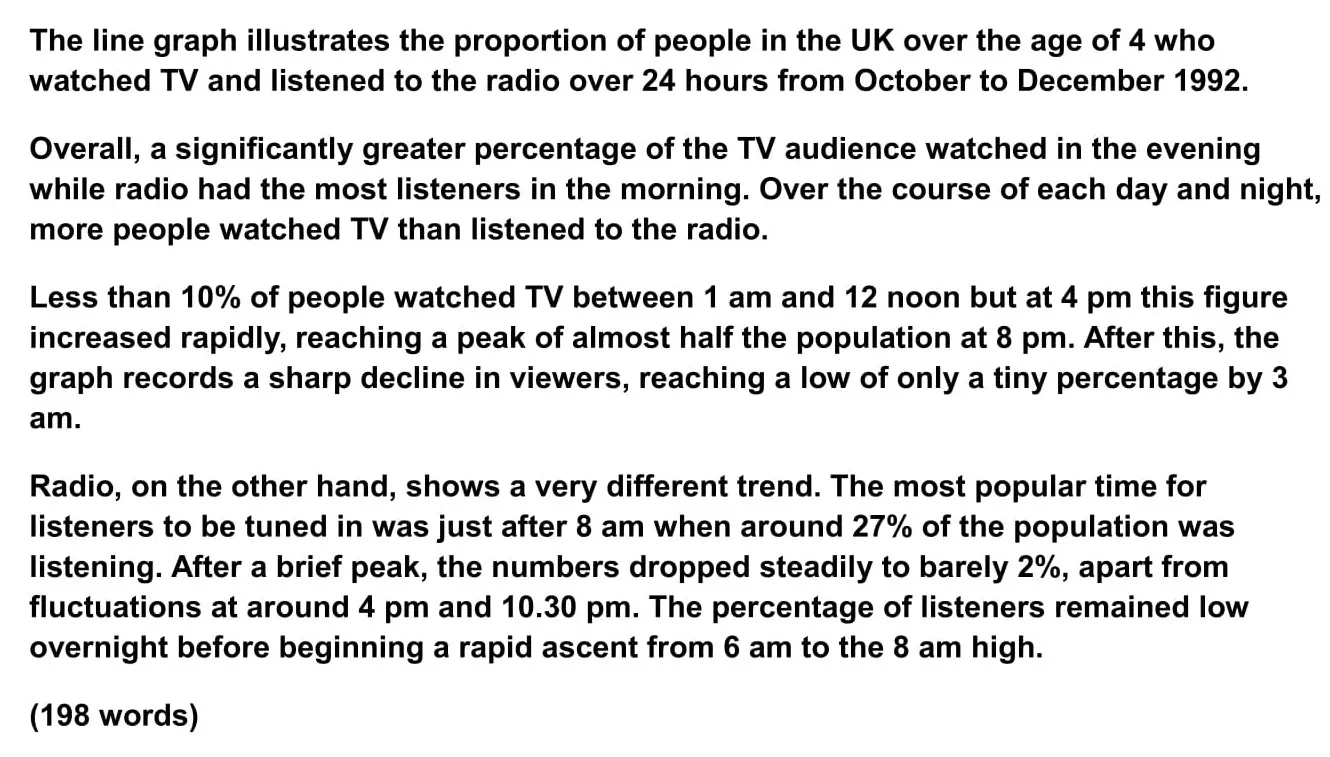
This sample IELTS line graph essay is well over the minimum word limit so you can see that you don’t have space to include very much detail at all. That’s why it is essential to select just a couple of main features to write about.
Now use what you’ve learnt in this lesson to practice answering other IELTS line graph questions. Start slowly at first and keep practicing until you can plan and write a complete essay in around 20 minutes.
Want to watch and listen to this lesson?
Click on this video.
Would you prefer to share this page with others by linking to it?
- Click on the HTML link code below.
- Copy and paste it, adding a note of your own, into your blog, a Web page, forums, a blog comment, your Facebook account, or anywhere that someone would find this page valuable.
Like this page?
Ielts academic writing task 1 – all lessons.
IELTS Academic Writing – A summary of the test including important facts, test format & assessment.
Academic Writing Task 1 – The format, the 7 question types & sample questions, assessment & marking criteria. All the key information you need to know.
Understanding Task 1 Questions – How to quickly and easily analyse and understand IELTS Writing Task 2 questions.
How To Plan a Task 1 Essay – Discover 3 reasons why you must plan, the 4 simple steps of essay planning and learn a simple 4 part essay structure.
Vocabulary for Task 1 Essays – Learn key vocabulary for a high-scoring essay. Word lists & a downloadable PDF.
Grammar for Task 1 Essays – Essential grammar for Task 1 Academic essays including, verb tenses, key sentence structures, articles & prepositions.
The 7 Question Types:
Click the links below for a step-by-step lesson on each type of Task 1 question.
- Table Chart
- Process Diagram
- Multiple Graphs
- IELTS Writing
- IELTS Line Graph
- Back To Top
* New * Grammar For IELTS Ebooks

$9.99 each Full Set Just $ 23.97
Find Out More >>
IELTS Courses

Full details...

IELTS Writing Ebook

Discount Offer
$7 each Full Set Just $ 21

Find out more >>
Testimonials
“I am very excited to have found such fabulous and detailed content. I commend your good work.” Jose M.
“Thanks for the amazing videos. These are ‘to the point’, short videos, beautifully explained with practical examples." Adari J.
"Hi Jacky, I bought a listening book from you this morning. You know what? I’m 100% satisfied. It’s super helpful. If I’d had the chance to read this book 7 years ago, my job would be very different now." Loi H.
"Hi Jacky, I recently got my IELTS results and I was pleased to discover that I got an 8.5 score. I'm firmly convinced your website and your videos played a strategic role in my preparation. I was able to improve my writing skills thanks to the effective method you provide. I also only relied on your tips regarding the reading section and I was able to get a 9! Thank you very much." Giano
“After listening to your videos, I knew I had to ditch every other IELTS tutor I'd been listening to. Your explanations are clear and easy to understand. Anyways, I took the test a few weeks ago and my result came back: Speaking 7, listening 9, Reading 8.5 and Writing 7 with an average band score of 8. Thanks, IELTS Jacky." Laide Z.
Contact
About Me
Site Map
Privacy Policy
Disclaimer
IELTS changes lives.
Let's work together so it changes yours too.
Copyright © 2024 IELT Jacky
All Right Reserved
IELTS is a registered trademark of the University of Cambridge, the British Council, and IDP Education Australia. This site and its owners are not affiliated, approved or endorsed by the University of Cambridge ESOL, the British Council, and IDP Education Australia.
- Skip to main content
IELTS Podcast
Pass IELTS with expert help.
Line graph example
Ielts line graph sample essay.
Home » IELTS academic task 1 » Line Graph Sample Essay
Line graphs come up often in IELTS writing part 1. We will show you how to confidently answer questions about line graphs, helping you practice summarising the data and identifying trends.
For each line graph (or line chart) question, you will need to summarise the information by selecting and reporting the main features and make comparisons where relevant. You should write at least 150 words. To make the best use of your time it’s important to write with a clear structure, focus on the most important trend or trends, choose appropriate vocabulary and avoid common mistakes.
In this tutorial, we have a band range 6.5 / 7 academic task 1 IELTS line graph example essay graded by an ex-IELTS examiner (on our team of essay correctors). There are some great examples of useful feedback to help you improve your own line chart answers.
This line graph tutorial will help you:
- Choose the right information
- Use the right sentence structures
- Decide on the perfect tense to use
Each criteria has been considered and r eviewed by one of the ex-IELTS examiners on our team. T he different sentences in the essay have been colour coded to correspond to the four marking criteria used by the British Council / IELTS IDP . At the IELTS podcast website, we also have an amazing essay correction service if you need help with your IELTS writing, so this is an example of the personalised feedback you could receive.
Make sure you understand what the codes mean:
- TR means task response – have you summarised the main information and made comparisons?
- CC is coherence and cohesion (does your essay ‘flow’ well, does it make sense?)
- LR is lexical resource (or vocabulary)
- GR means grammar
Therefore TR1 is the first comment about Task Response.
Example line graph question:
The line graph shows the average rainfall for three countries in Great Britain over a 12 month period in 2018. Summarise the information by selecting and reporting the main features, and make comparisons where relevant. Write at least 150 words
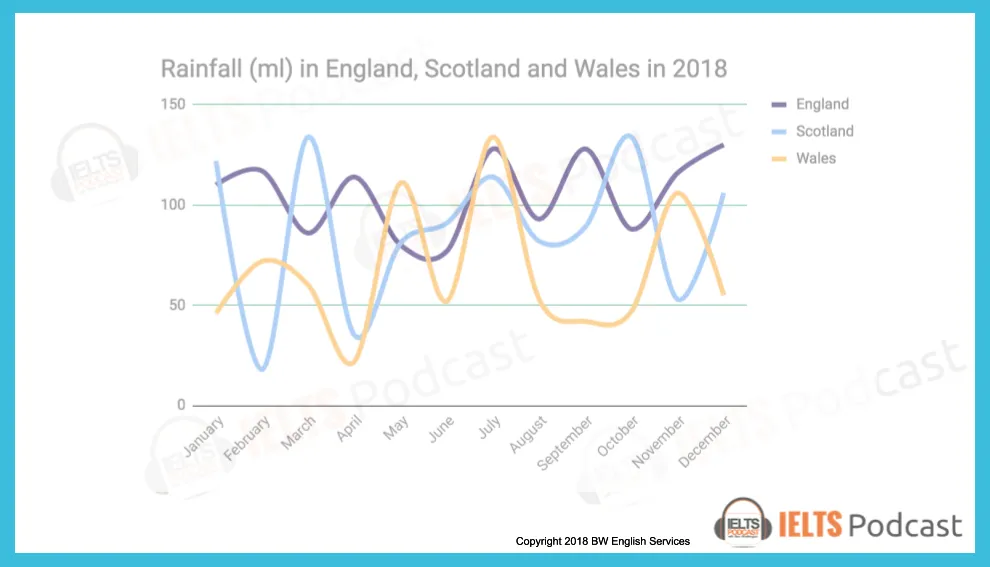
The line graph reveals the information of rainfall in three countries: England, Scotland, and Wales for one year starting from January to December in 2018.
In England, the amount of rainfall in January was recorded just above 100ml, which slightly increased in the next month by 5ml, and dipped to 90ml in March. The trend of raising and falling continue for a couple of months and reached its lowest figure in the graph for the month of June at around 70ml. After that, it is predicted that the level of rain will fluctuate and will remain around 120ml in December.
In Scotland, the amount of rain in January was 125ml, dropped unexpectedly to its lowest level to 20ml in February, and rocketed in next month to its peak value of 135ml. In April, the amounts of rain were less than 50ml, then start went up slightly until June. Then after it is predicted to drop until September, the following month it will start climbing up to October, and it will be decreased to 50 ml before reaching to 105 ml in December.
In wales, the rainfall was 50ml in January increased slightly in February and decreased to its lowest point in April around 30ml. In next month went up sharply to 110ml and dipped by 50ml in June. It is predicted that the highest amount of rain will be in July at 125ml and went down just below the month of June’s record. It will remain constant for two months before reaching 105ml in November and it will dip down in December to 52ml.
Overall it can be clearly seen that in each country the amount of rain in January will be approximately same in the month of December.
Let’s look at the essay above with ex-IELTS examiner commentary on each section.
The line graph reveals the information of rainfall (LR1) in three countries: England, Scotland, and Wales for one year starting from January to December in 2018.
TR1 – A good opening paragraph. Effective use of paraphrasing and you have included the key information.
LR1 – This could sound more natural. Perhaps ‘shows information about rainfall’, ‘shows rainfall statistics’ or ‘shows how much rain fell…’?
In England (TR2), the amount of the rainfall (GR1) in January was recorded just above 100ml, which slightly increased in next month by 5ml, and dipped to 90ml in March. The trend of raising (LR2) and falling continue (GR2) for a couple of months and reached its lowest figure in the graph for the month of June at around 70ml. After that, it is predicted that the level of rain will fluctuate and will remain (TR3) / (GR3) around 120ml in December.
TR2 – Good to adopt a systematic approach to presenting the information
GR1 – the amount of rainfall
LR2 – Check the difference between ‘rise’ and ‘raise’. GR2 – continued
TR3 – Make sure you report the information accurately.
GR3 – Stick to using past tenses here as all the information relates to 2018
In Scotland, the amount of rain in January was 125ml, dropped (CC1) unexpectedly to its lowest level to 20ml (CC2) in February, and rocketed (LR3) in next month (GR4) to its peak value (LR3) of 135ml. In April, the amounts of rain were less than 50ml, then start went up (GR5) slightly until June. Then after (CC3) it is predicted to drop until September, the following month it will start climbing up to October, and it will be decreased (TR4) / (GR6) to 50 ml before reaching to 105 ml (LR4) in December.
CC1 – You need to link your ideas together in an appropriate way. Perhaps ‘125ml, and this figure dropped…’?
CC2 – As before. Perhaps ‘… to its lowest level, 20 ml, in February’?
LR3 – Accurate use of some key language to describe graphs.
GR4 – in the next month GR5 – started to go up
CC3 – Take care with your use of linking words.
TR4 – As with the previous paragraph, make sure you report the information correctly.
GR6 – Stick to using past tenses as all the information relates to 2018.
LR4 – Omit the ‘to’ – ‘… reaching 105ml…’
In wales (GR7), the rainfall was 50ml in January increased (CC4) slightly in February and decreased to its lowest point in April (LR5) around 30ml. In next month went up sharply to 110ml and dipped (LR6) by 50ml in June. It is predicted that the highest amount of rain will be in July (TR5) / (GR8) at 125ml and went down just below the month of June’s record. It will remain constant (LR7) for two months before reaching 105ml in November and it will dip down in December to 52ml.
GR7 – Take care with your use of punctuation. Use a capital letter for the name of a country.
CC4 – You need to be careful with the way you link your ideas together. Perhaps ‘… in January and this figure increased…’?
LR5 – Very natural use of language.
LR6 – Good to incorporate a wide range of appropriate vocabulary.
TR5 – As before, you need to report the information accurately.
GR8 – As in the previous paragraphs, this is an inappropriate use of tenses.
LR7 – Despite the problems with tenses, this vocabulary is appropriately selected.
Overall it can be clearly seen that (CC5) in each country the amount of rain in January will be (TR6) / (GR9) approximately same in the month of December. (TR7)
CC5 – On the right track to introduce the main features of the graph.
TR6 – As before, there are problems with task achievement.
GR9 – Inappropriate use of tenses.
TR7 – I think this paragraph is intended to be your overview? If so, this would be a useful area to work on as it is one of the key differences between a ‘6’ and a ‘7’ for task achievement.
PROBABLE IELTS SCORE: 6.5 / 7.0
Some final practical advice for answering line chart questions in your IELTS test:
- Do not start writing before giving yourself enough time to think. First decide the language you will need in your answer. Give yourself 5 minutes to look, think and plan.
- Study the line graph carefully: be clear about the topic and what each line represents.
- The labels on the axes will give you useful information. Look at the horizontal axis to understand the period of time shown, and the vertical or x axis to see how the data is shown (in centimetres, in dollars, in millions?)
- Check the time frames very carefully in the line and plan how time differences will affect your choice of verb tenses.
- What is the main trend or trends?
- The easiest way to make comparisons is by using superlatives in your answer. For example: comparing the largest and smallest amounts of rainfall by country or comparing the least and most expensive products over time.
- Say how two or more lines are related – do they both increase over time? Are any points connected?
- Finally, make sure you have included an overview!
Audio tutorial with transcript
You can download or listen to the audio version here:
| Direct Download Here | Stitcher | iTunes | Spotify | Soundcloud | Transcript |
IELTS task 1 line graph video tutorial
More useful IELTS Academic Task 1 lessons:
- Academic Task 1 Sample Essays
- How to describe a pie chart
- Bar Chart IELTS
- How to describe a map
- Describe an image
- Describe a natural process
- How to describe a table
- How to paraphrase
- Line graph sample answer
- Marking criteria for Task 1
- Map vocabulary for IELTS Task 1
- How to describe a flow chart
- Essential skills for Task 1
- How to get band 9 for academic task 1
- How to describe a process diagram
Podcast: Play in new window | Download
IELTS Mentor "IELTS Preparation & Sample Answer"
- Skip to content
- Jump to main navigation and login
Nav view search
- IELTS Sample
20 Recent IELTS Graph samples with answers
The chart below shows how much money is spent in the budget on different sectors by the uae government in 2000..
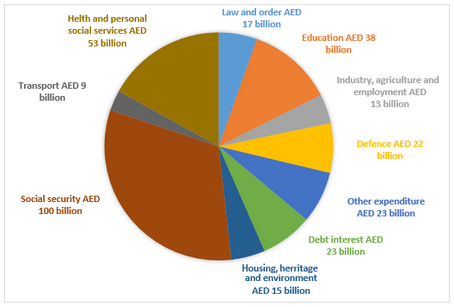
The charts below show the growth in the population in some of the world’s largest cities as well as the population distribution in urban and rural areas.
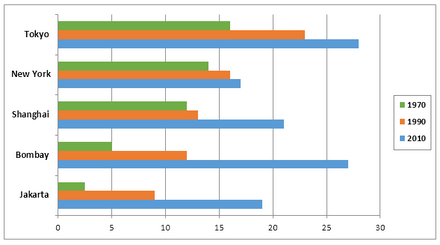
The average prices per kilometre of clothing imported into the European Union from six different countries in 1993 and 2003 are shown in the bar chart below.
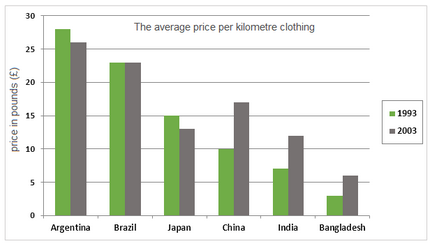
The bar charts below show the number of hours each teacher spent teaching in different schools in four different countries in 2001.
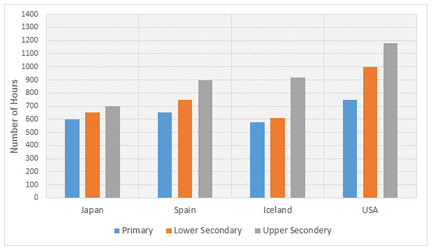
The line graphs below show the production and demand for steel in million tonnes and the number of workers employed in the steel industry in the UK in 2010.
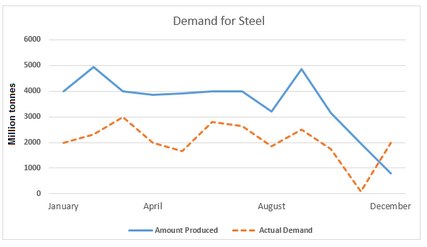
The bar charts and line graph below show the results of a survey conducted over a three-year period to discover what people who live in London think of the city.
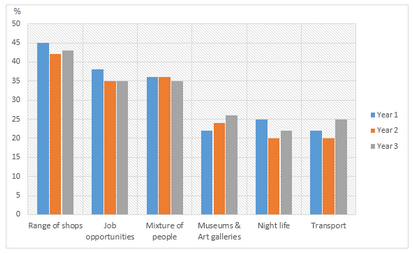
The pie charts below show the online sales for retail sectors in New Zealand in 2003 and 2013.
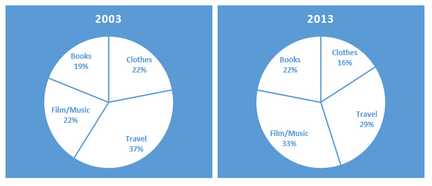
The number of tourists visiting Malaysia and Dubai from 1995 to 2003 is presented below.
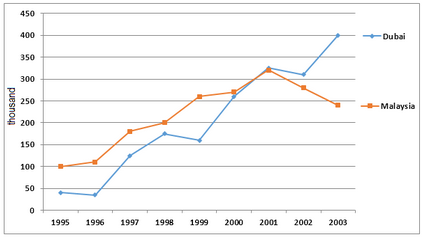
The bar chart below shows the estimated sales of jeans for two companies next year in Turkey. The pie chart shows the projected market share of the two companies in jeans at the end of next year.
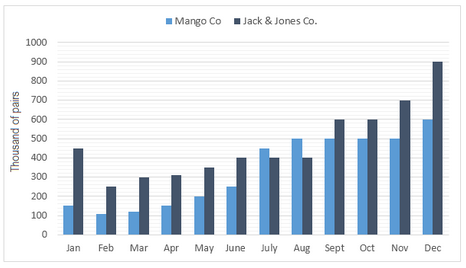
The graph below shows a survey result of 4000 participants who expressed what important aspects they have learned from the internship they have completed.
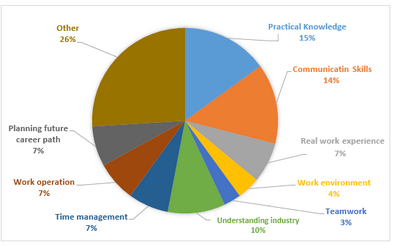
The graph below shows the top priorities by business companies in the USA in 2016.
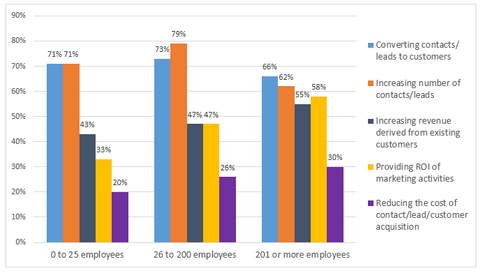
The graphs below show the average monthly expenditure on children’s sports and participation in different sports in the UK from 2008 to 2014.
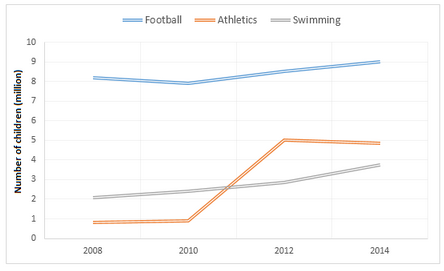
The pie charts below show the online shopping sales for retail sectors in Australia in 2010 and 2015.

The bar chart below shows Scotland’s exports to the rest of the UK and the rest of the world for the year 2014.
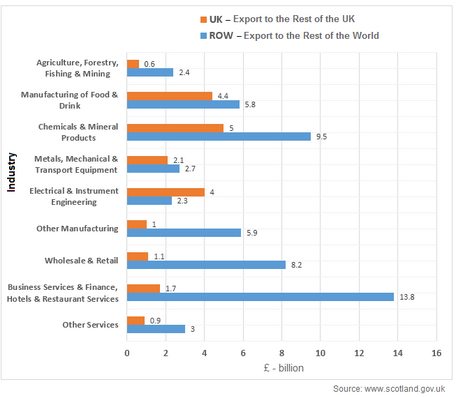
The chart below shows the changes in sales of four different types of books from 2002 to 2012.
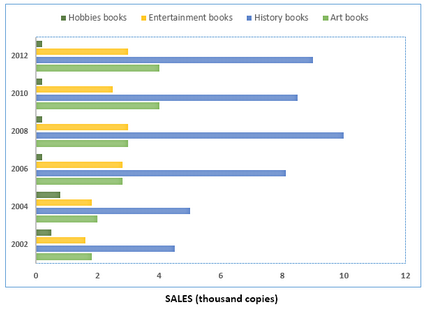
The diagram shows the procedure for university entry for high school graduates.
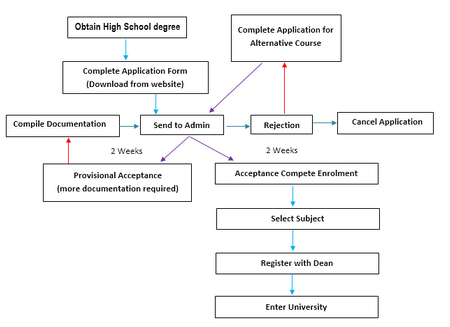
The chart below shows Morocco’s income from different economic sectors in 2003 as well as its income from fishing from 1982 to 2003.
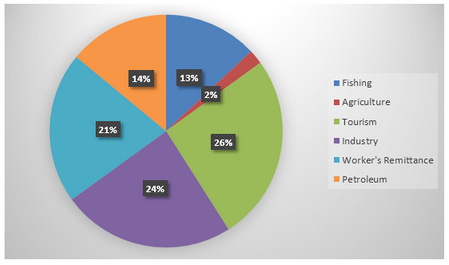
The bar chart below shows the proportions of English men and women of different ages who were living alone in 2011. The pie chart compares the numbers of bedrooms in these one-person households.
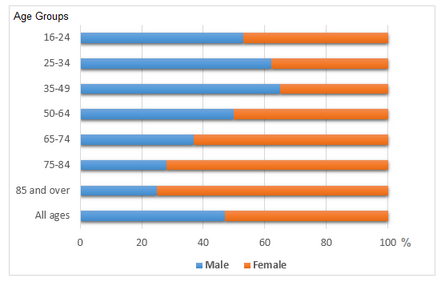
The diagram below shows the life cycle of a salmon, from egg to adult fish.
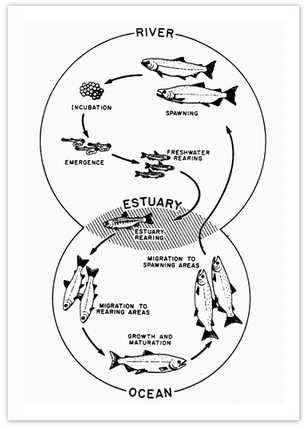
The table below shows the worldwide market share of the notebook computer market for manufacturers in the years 2006, 2007 and 2014.
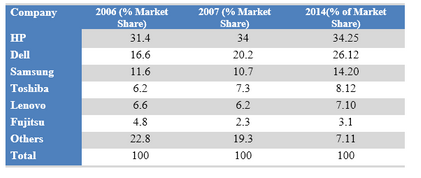
- Academic Writing Task 1
IELTS Materials
- IELTS Bar Graph
- IELTS Line Graph
- IELTS Table Chart
- IELTS Flow Chart
- IELTS Pie Chart
- IELTS Letter Writing
- IELTS Essay
- Academic Reading
Useful Links
- IELTS Secrets
- Band Score Calculator
- Exam Specific Tips
- Useful Websites
- IELTS Preparation Tips
- Academic Reading Tips
- Academic Writing Tips
- GT Writing Tips
- Listening Tips
- Speaking Tips
- IELTS Grammar Review
- IELTS Vocabulary
- IELTS Cue Cards
- IELTS Life Skills
- Letter Types

- Privacy Policy
- Cookie Policy
- Copyright Notice
- HTML Sitemap
IELTS Preparation with Liz: Free IELTS Tips and Lessons, 2024
- Test Information FAQ
- Band Scores
- IELTS Candidate Success Tips
- Computer IELTS: Pros & Cons
- How to Prepare
- Useful Links & Resources
- Recommended Books
- Writing Task 1
- Writing Task 2
- Speaking Part 1 Topics
- Speaking Part 2 Topics
- Speaking Part 3 Topics
- 100 Essay Questions
- On The Day Tips
- Top Results
- Advanced IELTS
How to write a line graph for IELTS writing task 1
Learn how to describe a line graph for IELTS writing task 1. IELTS Line graphs are common in writing task 1 along with bar charts, tables, maps, diagrams and pie charts. This lesson was last up-dated in 2018.
The guidelines below will help you structure your line graph answer and focus on the right aspects for a high score.
Steps: How to write IELTS Line Graphs
- try to include all information from the two axis and the names of categories.
- do not divide your key points into different paragraphs. Make sure you include the main increases and decreases shown.
- Use different verbs and nouns
- Use a range of adjectives and adverbs
- Vary your time phrases
- Click here to get a word list: LINE GRAPH VOCABULARY
- Don’t always give from … to … for the amounts, sometimes you can give the difference “it increased by double..”.
- Put numbers or percentages to support your sentences in the body paragraph. Failure to do that will result in a low score.
- Leave an empty line between paragraphs to make them easier to see. This is not a rule, it is a strong recommendation.
- If the line graph contains many lines and a lot of movement, be selective. You are being marked on your ability to select key features.
- Don’t spend more than 20 mins on task 1. You will need a full 40 mins for task 2.
- Write 150 words or more. Aim for about 160-190 words. Don’t write under the word count.
- Click here: IELTS Writing Task 1 Model Answers
Line Graph Sample
It is not common to be given only one line in IELTS writing task 1. However, this answer will provide you will an example of vocabulary, layout and general content.

- Source: IELTS Liz
Line Graph Model Answer
The graph illustrates how many people from the age of 65 and above were reported to have contracted influenza in a particular village in the UK from 1985 to 1995.
Overall, the number of cases of elderly people with influenza increased over the period given. The highest number of people with the illness can be seen in 1991.
In 1985, the number of cases of influenza stood at 40 and then rose steadily over the next three years to reach 55 in 1987. In the following year, 1988, the figure dipped slightly to below 50 after which it rose significantly to reach a high of 75 in 1991.
From 1991, there was a decrease to about 60 in 1993 of the number of reported cases of influenza. From this point, except for a slight increase of about 5 cases, the number remained at about 60 at the end of the period.
Focus Points:
Take time to read through the model and pay attention to:
- the content of each paragraph
- the use of verbs, nouns, adverbs and adjectives
- the logical order of information in the body paragraphs
Please note: this is a practice exercise lesson. It is rare for IELTS to give a one-line graph. So, use this to practice language and technique.
Recommended
- IELTS Writing Task 1: Tips & Model Answers
All the best
The line graph illustrates how many number of cases of elderly people over than 65 years, who infected by influenza in some UK village between 1985 to 1995.
Overall, the number of reported people with influenza had been increased over given time. The highest reaching point the influenza cases had been reported was in 1991 for about 75 cases.
is it okay to use [the number of ] more than 4 times
There is no rule that states how many times a certain word can be used. The marking system doesn’t work this way. For example, the word “people” is likely to be repeated a number of times in some IELTS writing task 2 essays and that is fine, even for a high score essay. As long as there is a range of language in your task 1 report and you have demonstrated the skill of paraphrasing, such as “the figure” or “how many”, you can repeat words within reason. IELTS Writing Task 1 is short, roughly between 7 and 9 sentences on average for a high band score report, and within those few sentences you need to show range of vocabulary. So, while there is no rule, I’m sure when you proof read your writing, you can see whether or not you have too much repetition.
Thanks a billion dear Liz.
You’re welcome 🙂
You are doing a wonderful job, Liz. May God always keep you healthy, happy, and prosperous. I have been teaching for the past 27 years and I still see that there are only a handful who are committed to teaching. You really are one of those. Kudos, Liz.
Thanks. That’s a really kind comment.
Thanks a million.💝💝💝
Hi, Liz. Please evaluate.
The graph illustrates the number of people aged 65 years and above with influenza in a particular village in UK between year 1985 to 1995.
Overview, the number of infected aged people with influenza increased over the years. In the year 1991,the highest number of people with the case were reported, whereas the lowest case was reported in 1985.
In 1985, the number of cases of influenza stood at 40 and then rose steadily to 55 in 1987. There was a slight fall in the number to 50 in the subsequent year afyer which it leveled off to hit a high of 75 in 1991.
Between 1991 to 1993, there was a drop from 75 to 60 in the number of people reported to be infected with influenza. The number remained constant at 60 from 1993 to the final year except for a slight increase of 5 cases reported in 1994.
Please Evaluate. The graph illustrates the number of people above the age of 65, who got infected by influenza flu in a particular village in the UK from 1985 to 1999. Overall, the number of cases of influenza increased over the time span, the least number of cases was 40 in the starting year while the maximum number was 75 in the year 1991. At the beginning of the period, the number of people infected with flu was 40, which increased to 55 in 1987 before dipping down to just below 50 in 1988. Afterwards the figure got a increment till it reached a high of 75 in the year 1991. After the year 1991, the cases of influenza saw a drop till they reached 60 in 1993 . From this point a slight increment (about 5 cases)was seen in the number in the year 1994 but in the last year figure dropped to 60.
Hi Liz thanks a bunch for your beneficial tips and answers. Honestly I’ve got a problem!! Is the “overview” of writing task 1 necessary? I mean we don’t have to use any numbers in it??? Cause i’m really confused. I live in Iran and I’ve taught to prepare my writing in just 3parts including: Introduction 2 or 3 body paragraph and Conclusion! Without overview. WHAT SHOULD I DO??
The overview is the most important paragraph for academic writing task 1. It contains a summary of the key features. This means you collect and describe all key features in that paragraph. The numbers and detail, you present in the body paragraphs. See my model answers and tips about the conclusion: https://ieltsliz.com/ielts-writing-task-1-lessons-and-tips/
Thank you Liz. It’s really effective.
Hello Liz, Thank you very much for the content that you produce. I’m using it as a main source for my IELTS preparation. I’m struggling a lot with identifying key features of a graph. Not sure why, but I usually end up writing too much information in an overview. Do you have any suggestions or tips on how to properly identify the key features for the overview? Thank you in advance.
Give a bird’s eye view – what goes up or down over the period. Then mention which might be higher or lower. Those are two key features that are in most line graphs. Another option is to add an unusual key feature – ie when lines show opposite trends (but this isn’t common). So, the two common key features I mentioned will be two sentences – one each. Your task is to simplify what you see – not complicate it.
thank you liz.Your lessons are too helpful.
Hi , Can you please let me know that is it ok to use brackets in your writing tasks ?
See my model answers for writing task 1 on this page to learn your answer: https://ieltsliz.com/ielts-writing-task-1-lessons-and-tips/
Hi liz, Somebody told me that, for graphs ‘Overall Statement’ should put at last, rather than within introduction or second paragraph. To what extent it is right??
There are no rules about this. The examiner will mark you based on logical organisation. Your overview statement can come before or after the smaller detail. This means it comes before or after the body paragraphs.
Mam, as you said before, I would prefer “overall” just after the Introduction paragraph. thank you so much for your worthful lessons! All of the classes are excellent and it means a lot…
Hello liz I couldnot find your answers for all the writing task 1 ,i had found it once,but now i could’nt find it again rather those in the home page..please help me this..that is really usefull for me.
Go to the red bar at the top of each page and click on the words: Writing Task 1. All main pages are accessed through the red bar.
Thank you so much for your valuable guidance. I request you to provide one more example on line graphs which has 3-5 lines so that it would be better to learn and write in the exam. I also want to inform you that I am planning to appear for my IELTS in the month of October and your website is the only source for me to study. So I request you to help me in this and i hope that it would be better for others also. Looking forward to get positive response from your side. Thanks again in the advance.
IT’s certainly something I will put on my list of things to do, but I’ll actually be taking a break in September and possibly October too. Only a few reading or listening lessons will be posted during that time as well as updated topics.
and plateau word good for line graph
If you don’t know it, don’t use it.
Hello Liz mam, I’ve a question. Can we use both verb+adverb and adjective+noun in a line graph or we have to choose only one pair for whole graph. Thanks in advance.. Abdul….
You should alternate so that you demonstrate your language skills.
Dear Liz, It is possible in Writing task 1 just have 1 body paragraph ?
If you want a good band score, then you need to demonstrate the skill of organising paragraphs. See the band score requirements.
Excuse me, Why ‘the origin number’? I think that should be ‘the original number’
Thanks for spotting it. It’s a typo. Liz
Dear madam,can we mention dates in overview paragraph.what I mean is that mentioning time phrases ” at the beginning of the period,during mid years,at the end of the period” while describing key changes would’nt be better instead of writing specific dates such as,1999,2000 or it does’nt affect much.
https://ieltsliz.com/ielts-liz-news/
hey Liz thnas for everthing
Hi Liz, Question about the intro, how come it is “over 10 years” when it is from 1983-1992? Thanks, Joharra
The word “over” does not mean “more than” in this context. It refers to over the period. There are 10 years given. Liz
Hi Liz, Just a follow up question. So the counting of years should start at the first given year, which is 1983? However, 1983 + 10 = 1993. In the line graph it is 1992. There was another essay says 26 years (1981-2007) which is correct when being added (1981 + 26 = 2007). Just really curious. Do you have any explanations about this? And one last question, should the overview be in a separate paragraph or part of the intro? Thanks a lot! Joharra
You can count it on the graph, not by doing calculations. Just look at the graph and count. Liz
Thanks! that makes everything clear 🙂
Hi Liz, thank you so much for you free lessons, thank you for teaching me that overview contains the key features or the highest or the lowest point ..but i am still struggling to understand the real content of overview, I would like to ask about your overview above, you wrote” Overall, the number of cases of disease X remained below 200 over the period given except for a considerable surge between 1989 and 1991 when the figures doubled.” -In 1991, the number of cases is actually 350 which is not double of 200, so, is it still fine or accurate to say that” the figure doubled”? or should we say ”…the figure almost doubled?because it is doubled in 1989 (400 cases) but not in 1991 (350 cases). or does the accuracy of information we give in overview is not 100% required?
My last question is about Grammar, would you please explain a bit more when we put ”s” in ”figures”? One student wrote ”’The figures rose steadily in the next four years, to reach its first peak in 1987” and you asked to take off ”s” in figure. when we should not put ”s” like”figure”?thank you.
The overview contains a description, so if we write “it doubled” as a description it is fine. But you can certainly make it clearer by writing “it more or less doubled”. As long as you don’t write “it doubled exactly”. But you need to understand that we are not referring to details. In the first years the numbers were 200 and under, then they reached 400. The description is “doubled”. If you get lost in details, then it isn’t an overview.
Usually, we write about “the figure” rather than using the plural. All the best Liz
Many thanks, God bless you!
I am from Mongolia. I am doing independent study on the preparation of IELTS examination. Thank you for helping the students like me around the world. I would like to kindly ask you to check my writing below in order to let me know my writing skill in task 1.
The line graph illustrates the amount of goods transported in four different ways (road, water, rail and pipeline) in Uk between 1974 and 2002. The units are measured in million tonnes.
Overall, over the period, the highest amount of goods was transported by road while the least amount of goods was transported by pipeline. Interestingly, all the amounts of goods were increased over the 28 years except the amount of rail transportation which almost reached back to it’s original number.
In terms of the road, the amount of goods was transported, it began about 70 million tonnes which rose steadily over the following 18 years to reach over 80 million tonnes in 1992. In the following 4 years, there was a gradual decline after which it grew up to nearly 100 million tones. Likewise, about 39 million tonnes of goods was transported through water in the first year and then the figure fluctuated slightly and rose to about 65 million tones. Similarly, in 1974, the figure of the pipeline transportation stood at about 5 million tonnes and there was a steep fluctuation until it leveled out from 1995 to 2002.
On the other hand, the amount of goods was transported by train was 40 million tonnes in 1974 which was followed by slight changes and reached at just above it’s beginning figure of 40 million tonnes.
Please read my notice: https://ieltsliz.com/posting-writing/ Thanks Liz
how to write bar graph
There is a free video and other lessons for bar charts on this page: https://ieltsliz.com/ielts-writing-task-1-lessons-and-tips/ Liz
Hello How can apply this sentence structure. Subject+ verb + proposition + indirect object + direct object. In graph and essay
You will find sentence structure lessons for line graphs on this page: https://ieltsliz.com/ielts-writing-task-1-lessons-and-tips/ Thanks Liz
Speak Your Mind Cancel reply
Notify me of new posts by email.
Advanced IELTS Lessons & E-books

Recent Lessons
Ielts liz personal update 2024, ielts model essay -two questions essay type, ielts bar chart of age groups 2024, ielts topic: urban planning, ielts listening transcripts: when and how to use them, 2024 ielts speaking part 1 topics.

Click Below to Learn:
- IELTS Test Information
Copyright Notice
Copyright © Elizabeth Ferguson, 2014 – 2024
All rights reserved.
Privacy Policy & Disclaimer
- Click here: Privacy Policy
- Click here: Disclaimer
Return to top of page
Copyright © 2024 · Prose on Genesis Framework · WordPress · Log in
Writing Strategies, Tips, and Samples for the IELTS Line Graph
Table of Contents
What is a line graph in ielts, use of line graph in ielts writing, structure of the ielts academic writing line graph, how to describe a line graph in ielts, strategies to score high in ielts academic line graph, tips to create ielts line graph, ielts line graph samples.
If you are preparing for the IELTS Writing test to study abroad, then you might have heard the term line graph . In the IELTS Academic Writing, understanding how to interpret and present data from various sources is crucial. One common form of data representation you may encounter is the line graph.
IELTS Task 1 Line graphs are used to illustrate trends, changes, and comparisons over a period. It is very important to learn about the Line Graph for IELTS Writing to get a good band score. However, many students are unaware of the Line Graph and its uses. But now you do not need to worry about it.
In this blog, we will explore everything about the IELTS line graphs and sample responses to help you ace this aspect of the exam.
A line graph, also known as a line chart, is a graphical representation of data over time. It consists of a series of data points connected by straight lines. Each data point represents a specific value, and the lines help visualise the progression or fluctuations in the data over a specified period.
Line bar graphs are a common type of visual data representation used in the IELTS Academic Writing Task 1. Test-takers are presented with a line graph that depicts information related to a specific trend, such as changes in temperature, population growth, or economic data. Your task is to analyse the graph and write a descriptive report based on the provided information.
The structure of your IELTS Task 1 line graph typically consists of the following components -
Introduction - Provide a brief overview of the graph's subject, including the timeframe and data sources.
Overview - Summarise the main trends or patterns evident in the line bar graph. Mention the highest and lowest points, significant increases or decreases, and noteworthy observations.
Details and Comparisons - Present specific data points from the graph. Use data accurately to support your observations, and make comparisons where relevant.
Conclusion - Provide a concise summary of the key findings without introducing new information.
Describing a line graph effectively in IELTS involves the following steps -
Identify Trends - Start by identifying the major trends or changes in the graph. Look for upward or downward slopes, plateaus, spikes, or significant patterns.
Use Data Points - Refer to specific data points on the graph to support your description. Also, mention exact numbers, percentages, or values when applicable.
Vary Your Vocabulary - Utilise a rich and varied vocabulary to describe the data. In addition, use adjectives and adverbs to add nuance to your descriptions. For example, instead of saying "a significant increase," you can say "a substantial rise."
Provide Context - Offer contextual information that helps the reader understand the significance of the data. This could include reasons for the trends or comparisons with other data sets.
To score high in the IELTS Academic Writing Line Graph task, consider the following strategies:
Before you start writing, take your time to thoroughly understand the graph and its key features.
Pay attention to the major trends and significant changes. Your overview should capture the essence of the graph.
Stick to the information presented in the graph; do not make assumptions or provide personal opinions.
Employ a variety of words and phrases to describe trends and changes. This showcases your language skills.
Don't repeat the exact phrases from the graph - paraphrase when possible to demonstrate your language versatility.
The IELTS Academic Writing Task 1 is time-bound. Allocate sufficient time to each section (introduction, overview, details, and conclusion) to ensure balanced coverage.
Here are some essential tips for creating a successful IELTS Line Graph response.
Familiarise yourself with various line bar graphs for IELTS by practising with sample questions. This practice will build your confidence and improve your analysis skills.
Expand your vocabulary related to data representation. Knowing synonyms for standard terms such as "rise," "fall," "peak," and "trough" can be very helpful.
IELTS Task 1 Line graphs can depict various data, including trends, comparisons, and combined information. Understand how to approach different types.
Carefully review your response for grammar and spelling errors because clear and error-free writing is essential.
If possible, have someone with strong English language skills review your practice responses and provide feedback.
Now, let's explore some IELTS Line Graph samples to see these strategies and tips in action.
IELTS Line Graph Question
The graph below gives information from a 2008 report about the consumption of energy in the USA since 1980 with projections until 2030. Summarise the information by selecting and reporting the main features and make comparisons where relevant. Write at least 150 words.
IELTS Line Graph Response
The aforementioned line graphs showcase data extracted from a 2008 report detailing energy consumption trends in the USA from 1980, extending to projected figures up to 2030.
As an overview, it can be stated that there has been a consistent increase in the consumption of fossil fuels from the initiation of the period. Projections indicate a further dependence on these fuel sources. Conversely, cleaner energy sources have accounted for significantly less consumption, and forecasts anticipate a continuation of this pattern.
Within the realm of fossil fuels, including coal, natural gas, petrol, and oil, their energy consumption has shown consistent growth since 1980. Commencing at 35 quadrillion units in 1980, petrol and oil experienced fluctuations until 2000. Subsequently, they exhibited a stable and consistent increase, with a projected consumption surpassing 45 quadrillion units by 2030. Likewise, coal demonstrated a similar upward trend, with estimates indicating it will surpass 30 quadrillion units by 2030. Natural gas usage is expected to plateau at approximately 24 quadrillion units from 2020 onwards.
Conversely, at the onset of the period, cleaner energy sources began with consumption levels below 5 quadrillion units and showcased a decrease in their usage, except for nuclear power, which saw a slight uptick to 6 quadrillion units in 2005. Predictions anticipate a modest increase in the use of solar/wind energy. Moreover, hydropower is foreseen to sustain relatively constant consumption levels until 2030."
Mastering the IELTS Task 1 Line Graph requires a combination of understanding data visualisation, vocabulary, and effective writing strategies. By practising regularly, improving your vocabulary, and adhering to the recommended structure, you can confidently tackle this part of the IELTS exam . Success in the IELTS Line Graph task boosts your Writing band score and enhances your ability to analyse and present data effectively.
We hope you are now aware of the Line Bar Graph and how to create it for writing tasks. However, you can contact Prepare IELTS (PI) expert counsellors for further guidance. Our team of education experts is dedicated to providing you with the best guidance in the IELTS exam. You can get a one-on-one counselling session online via our platform. Contact us at [email protected] or call us at +91 9773398388 .
No, IELTS may also include other types of visual data representation, such as bar charts, pie charts, and tables. It is essential to be prepared for a variety of data formats.
Your response should be at least 150 words. It is important to strike a balance between providing sufficient detail and adhering to the time limit.
It's better to use full sentences and paragraphs in your response. This format allows you to provide a structured and coherent explanation of the data. Bullet points or lists are generally not recommended.

Boost your IELTS Speaking score
Latest News

IELTS Score You Need for Admission in Europe
2024-04-13 12:34:11

Top Universities Accepting IELTS Scores
2024-04-12 15:54:24

IELTS Writing Vocabulary - Topic Wise Word List
2024-04-11 15:43:35

Describe a Time When You Needed to Use Your Imagination - IELTS Speaking Cue Card
2024-04-11 14:33:23

MBA Colleges Accepting IELTS Scores
2024-04-10 16:04:57

Describe a piece of good news - IELTS speaking cue card
2024-04-10 15:04:29

IELTS Exam Syllabus: Exam Format and More
2024-04-09 16:49:48
.jpg)
IELTS Writing Task 2: How to write a high-scoring IELTS Essay in 10 easy steps
2024-04-09 16:39:50

Describe a party that you enjoyed - IELTS speaking cue card
2024-04-09 16:15:20

Describe a difficult thing you did - IELTS Speaking cue card
2024-04-08 17:47:48

Related Blogs
A php error was encountered.
Severity: Notice
Message: Undefined variable: tips_category
Filename: Blog/blog_detail.php
Line Number: 383
File: /home/prepareieltsexam/public_html/application/views/frontend/Blog/blog_detail.php Line: 383 Function: _error_handler
File: /home/prepareieltsexam/public_html/application/controllers/Tips.php Line: 545 Function: view
File: /home/prepareieltsexam/public_html/index.php Line: 316 Function: require_once
Severity: Warning
Message: Invalid argument supplied for foreach()

IELTS Score You Need for Admission in Europe Since Indian students are writing and speaking in English with Indian accent, with not much exposure to foreign accent, it can be the cause of
- (5.0 /152 votes)

Top Universities Accepting IELTS Scores Since Indian students are writing and speaking in English with Indian accent, with not much exposure to foreign accent, it can be the cause of

MBA Colleges Accepting IELTS Scores Since Indian students are writing and speaking in English with Indian accent, with not much exposure to foreign accent, it can be the cause of

IELTS Score for Germany: Minimum Score Required by Top Universities
IELTS Score for Germany: Minimum Score Required by Top Universities Since Indian students are writing and speaking in English with Indian accent, with not much exposure to foreign accent, it can be the cause of
Registration Now

Share Your Feedback
Free 1 day ielts class with our head of ielts program nick carey.
Register on the spot and get 10% Discount on IELTS fee!
Achieve IELTS Success with Our Comprehensive Classes, proven teaching methodology, and Experienced Teachers.
Affordable Fee Structure
Experienced & Certified Trainers
Interactive Class Activities
Friday, 2nd Feb 2024
11:00 AM - 4:00 PM
How To Write a Line Graph Essay: Step By Step Guide
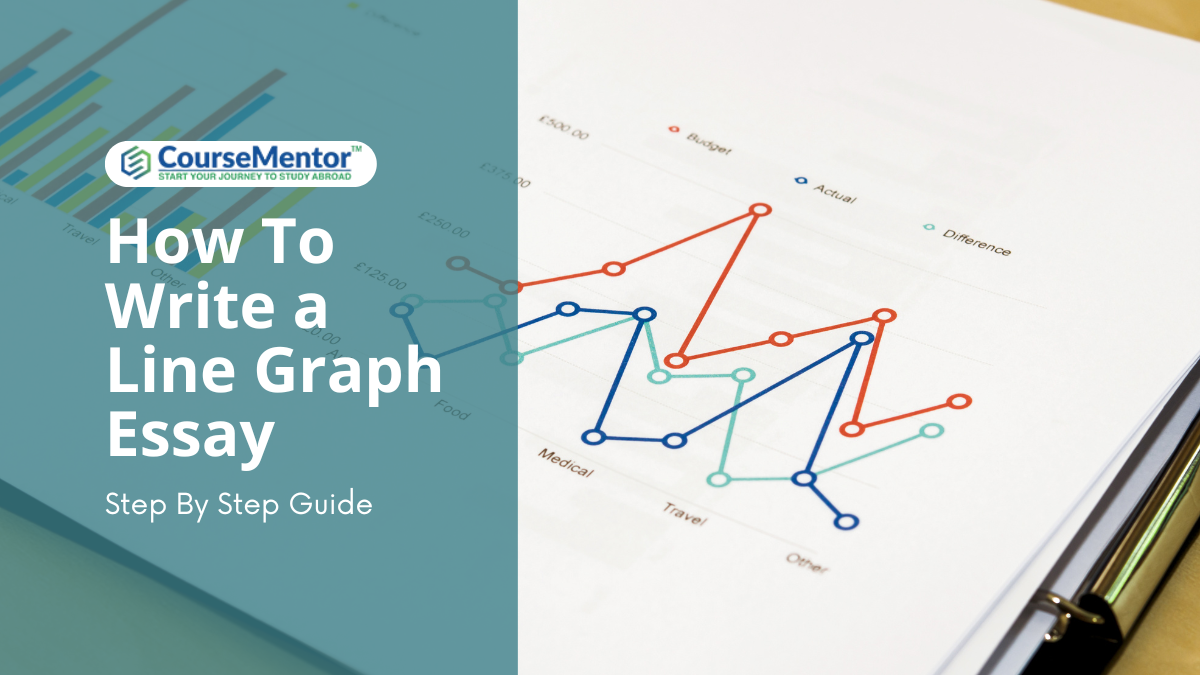
- Post author By admin
- March 13, 2024
- No Comments on How To Write a Line Graph Essay: Step By Step Guide
Have you ever stared at a line graph in a textbook, wondering how to turn that squiggly line into a compelling essay? Fear not, fellow learners! This guide will equip you with the knowledge and skills to write a stellar line graph essay, even if you’re new to data analysis or academic writing. So, let’s start with a guide on how to write a line graph essay?
Table of Contents
Why Line Graphs Matter
Data surrounds us, from weather patterns to social media trends. Line graphs are a fantastic tool to visualize changes over time, making them crucial in various fields like science, economics, and even social media marketing. Understanding how to interpret and write about line graphs is a valuable skill for academic success and beyond.
How To Analyze the Graph?
Before putting pen to paper (or fingers to keyboard), take a close look at your line graph. It’s like deciphering a secret code! Here’s what you need to identify:
- The Big Picture: What’s the title? Does it give you a clue about the subject matter?
- Axes in Action: Identify the X-axis (horizontal) and Y-axis (vertical). What information do they represent? Are there units of measurement (e.g., years, dollars)?
- Labels for Clarity: Look for labels for each line on the graph. What do they represent? Are there any legends or keys explaining the lines?
- Time Traveler: What time frame does the graph cover? Is it a few months, years, or even decades?
- The Ups and Downs: This is where the magic happens! Analyze the trends. Does the line generally increase, decrease, or fluctuate? Are there any specific peaks or drops?
How To Write a Line Graph Essay?
Now that you’ve unlocked the secrets of the graph, let’s craft your essay.
Introduction: Setting the Scene (100-120 words)
- Hook: Start with a captivating sentence that grabs the reader’s attention. This could be a surprising fact related to the graph’s topic or a thought-provoking question.
- Keyword Introduction: Mention the importance of line graphs and how they help us understand data.
- Thesis Statement: Briefly state that you’ll be analyzing the line graph and explaining the trends you observe.
Did you know that smartphone usage has skyrocketed in the last decade? This essay will analyze a line graph depicting this trend, exploring the reasons behind the increase and its potential impact on society.
Overview Paragraph: The Big Picture (80-100 words)
- Briefly paraphrase the title of the graph and describe what it depicts.
- Highlight the main trends you observed – is there a steady increase, a sharp decline, or something else?
- Mention any interesting comparisons between the lines on the graph (if applicable).
The line graph titled “Global Smartphone Usage 2010-2020” reveals a significant rise in smartphone users over this decade. The data shows a steady upward trend, with a slight acceleration in recent years. Notably, the graph also shows a difference in the growth rates between developed and developing countries.
Body Paragraphs: Diving Deeper (300-400 words each)
This is where you showcase your detective skills and explain the trends you identified. Here’s what to focus on in each body paragraph:
- Pick a Specific Trend: Choose a key trend you observed in the graph (e.g., a constant increase, a sudden drop).
- Support Your Claims: Use evidence from the graph! Mention specific years, numbers, or percentages to illustrate your points.
- Explain Why: Don’t just describe, explain! What factors might be contributing to the trend? Consider possible causes related to the topic of the graph.
One significant trend is the steady rise in smartphone users globally. According to the graph, the number of users doubled between 2010 and 2020, from 1 billion to 2 billion. This growth can be attributed to several factors, including the increasing affordability of smartphones, the development of user-friendly apps, and the expansion of internet access in many regions.
Conclusion: Wrapping it Up (80-100 words)
- You can optionally add a final thought or prediction about the future based on the graph’s data.
In conclusion, the line graph clearly demonstrates the explosive growth in smartphone usage over the past decade. This trend is likely to continue as technology advances and internet access becomes more widespread. Understanding these changes is crucial for businesses, educators, and policymakers to adapt and shape the future of technology and its impact on society.
Key Points To Enhance Reader Experience
- Visuals: Consider including an image of the line graph you’re analyzing (with proper attribution if necessary). Annotating specific trends on the image can further enhance understanding.
- Real-world Examples: Where relevant, connect the data in the line graph to real-world examples to add context and make your essay more relatable.
Common Mistakes to Avoid: How To Write a Line Graph Essay
- Just Describing, Not Explaining: Don’t simply describe the trends in the graph. Analyze them and explain why they might be happening.
- Ignoring the Title and Labels: The title, axes labels, and any legends are crucial for interpreting the data. Make sure you use the information they provide in your essay.
- Making Up Data: Don’t invent information or draw conclusions that aren’t supported by the graph. Stick to the facts!
Bonus Tips: How To Write a Line Graph Essay
- Transition Words for a Smooth Flow: Transition words like “however,” “furthermore,” and “in addition” will help connect your ideas and create a logical flow in your essay.
- Vary Your Sentence Structure: Don’t be afraid to mix up short and long sentences to keep your writing engaging.
- Proofread and Edit: Once you’ve finished writing, take the time to proofread your essay for any grammatical errors or typos. Double-check that your data and interpretations align with the graph.
Additional Tips for Advanced Line Graph Essay Writing
- Compare and Contrast: If your line graph has multiple lines, delve deeper into the comparisons between them. Analyze how they rise, fall, or interact with each other.
- Consider External Factors: Are there any external events or developments that might explain the trends in the graph? Think outside the box and explore these connections.
- Acknowledge Limitations: No data source is perfect. Briefly mention any limitations of the data presented in the graph, such as the timeframe or sample size.
By following these steps and incorporating these tips for How To Write a Line Graph Essay, you’ll be well on your way to writing compelling line graph essays that demonstrate your analytical and communication skills.
Remember, practice makes perfect! The more you analyze line graphs and write about them, the more confident you’ll become. So grab your data, get ready to explore trends, and write those essays like a pro!
Leave a Reply Cancel reply
You must be logged in to post a comment.
- australia (2)
- duolingo (13)
- Education (265)
- General (70)
- How To (16)
- IELTS (127)
- Latest Updates (162)
- Malta Visa (6)
- Permanent residency (1)
- Programming (31)
- Scholarship (1)
- Sponsored (4)
- Study Abroad (187)
- Technology (12)
- work permit (8)
Recent Posts

- A Beginner’s Guide to IELTS
- Common Grammar Mistakes [for IELTS Writing Candidates]
Writing Correction Service
- Free IELTS Resources
- Practice Speaking Test
Select Page
Describing an IELTS Line Graph [An Annotated Sample Answer]
Posted by David S. Wills | Mar 13, 2023 | Model Essays | 0
In task 1 of the IELTS writing test, you could be asked to describe a line graph. This is actually very common and so it’s really important that you can do this well.
Today, I am going to show you a typical IELTS line graph and then give you some advice on how to describe it effectively. This will include my own sample band 9 answer, which I will annotate so that you can more easily understand it.
You can read my full guide to describing line graphs here .
The Line Graph – Bakery Sales
Here is our line graph for today:
The graph below gives information about the sales of the three most commonly purchased items in a particular bakery for the year 2014. Summarise the information by selecting and reporting the main features, and make comparisons where relevant.
This is a pretty straightforward line graph and I don’t think there are any particular difficulties here. However, it is important to read the question carefully and analyse the graph before you begin writing.
Note that this is not about all of the sales in this bakery. Specifically, it is about “the three most commonly purchased items.” You should mention that in your introduction or else it may seem as though only three items are available in this place.
What do you Need to Do?
With any graph description, you need to describe the data accurately for your reader. That means your language must be clear and precise. Also, you should not attempt to describe every little detail. Note the phrase “selecting and reporting the main features.” This means you have to be selective. You should also “make comparisons where relevant.”
Looking at this chart, we can see that each of the three lines had a pretty different trend from the others. One line went up and then down. Another went down and then up. A third just moved slowly up. Your job is to explain this effectively.
Remember to group your data logically. There are various ways to do this, but here’s how I will structure my essay:
Why have I organised my information like this?
As I said, there are different ways to do it effectively, but I felt that a good way was to group the final changes together. That’s because it is in these final months that there are substantial changes in the sales positions of these three items.
Normally, I would have grouped the sales of bread and buns together and then kept pies separate. That’s because pies seem to be at a very different level. However, because the sales of pies rose above buns at the end, it seems like an awkward way of grouping the information .
Learn more about task 1 structure here .
Common Problems to Avoid
It is worth mentioning a few mistakes that people often make in IELTS writing task 1. To begin with, you might have noticed the phrase “a particular bakery.” A lot of people try to paraphrase the question and this is a good option for task 1, but it can lead to problems. A “particular bakery” means a single business whose name we have not been given.
In such situations, I almost always write “an unknown ____.” For example, my first line for this essay will be:
- The line graph shows information about sales in an unnamed bakery in the year 2014.
Speaking of paraphrasing, you should also not include any reference to “below.” Whilst the task description is above the graph, your essay will be on a separate piece of paper or on a computer screen. To say “below” would be false information.
You also really need to avoid vague language that fails to convey the ideas expressed in the graph. This is actually one of the most common problems people make in task 1. Always make it clear to your reader that the data refers to sales (in dollar terms) of three select items from one bakery.
Sample Band 9 Answer
Here is how I would answer the question:
The line graph shows information about sales in an unnamed bakery in the year 2014. There are three items listed and their sales varied substantially during the period. In January, bread was by far the most commonly purchased product, with $80,000 of this sold. This was twice as much as the next highest item, buns, and eight times greater than the third one, pies. Over the next two months, however, bread sales plummeted to almost half their initial value while sales of buns increased by fifty percent. From March through to September, buns remained the most profitable item as bread sales fluctuated wildly in second place. Meanwhile, sales of pies slowly and steadily increased. Towards the end of the year, there were more changes. Sales of bread took off from October onwards, surpassing those of buns to become the most profitable item again and reached $80,000 in sales in December. Sales of buns continued to drop, falling into third place after pie sales shot in November and December.
Annotated Version
Now let’s look at the purpose of these sentences:
Final Comments
My structure was simple but effective and my language was accurate enough to convey the data. I picked only the important parts and glossed over the rest. Remember that you don’t have much time to complete this task!
Notice how few numbers there are. Many IELTS candidates make the mistake of cramming lots of numbers into their descriptions. This shows a lack of thinking and it is also a means of avoiding words. However, IELTS is an English test! You need to use words rather than copying numbers from a graph.
About The Author
David S. Wills
David S. Wills is the author of Scientologist! William S. Burroughs and the 'Weird Cult' and the founder/editor of Beatdom literary journal. He lives and works in rural Cambodia and loves to travel. He has worked as an IELTS tutor since 2010, has completed both TEFL and CELTA courses, and has a certificate from Cambridge for Teaching Writing. David has worked in many different countries, and for several years designed a writing course for the University of Worcester. In 2018, he wrote the popular IELTS handbook, Grammar for IELTS Writing and he has since written two other books about IELTS. His other IELTS website is called IELTS Teaching.

Related Posts
2x Process Diagram Model Essays
June 26, 2017
Band 9 Sample Answer: IELTS Writing Task 1
April 5, 2017
Sample Essay on Rising Crime Rates
November 21, 2022
Process Diagram from IELTS 16 [Sugar Cane]
April 4, 2022
Leave a reply Cancel reply
Your email address will not be published. Required fields are marked *
This site uses Akismet to reduce spam. Learn how your comment data is processed .
Download my IELTS Books
Recent Posts
- How to Improve your IELTS Writing Score
- Past Simple vs Past Perfect
- Complex Sentences
- How to Score Band 9 [Video Lesson]
- Taxing Fast Food: Model IELTS Essay
Recent Comments
- David S. Wills on Writing Correction Service
- James Oluwasegun on Writing Correction Service
- Daisey Lachut on IELTS Discussion Essays [Discuss Both Views/Sides]
- David S. Wills on Describe a Historical Period
- Siavash on Describe a Historical Period
- Lesson Plans
- Model Essays
- TED Video Lessons
- Weekly Roundup

Multi-Niche Blog
IELTS Writing Task 1 Line Graphs: Sample Questions and Expert Answers
Have you ever noticed that line graphs are frequently used in IELTS Writing Task 1? I’ve taken the initiative to create this resource to help you excel in your IELTS academic writing task 1. Drawing from my own experience as an IELTS examinee, I can empathize with the difficulties you might encounter during test preparation. In this blog, our goal is to address these challenges, and all you need to do is read or use my practice test answers, which I’ve specifically crafted to enhance your exam readiness. You’ll be amazed by the transformative results!
Line Graph #1

Sample Answer for Line Graph #1:

More sample answers:
The provided graph illustrates the evolution of birth and death rates in New Zealand from 1901 to 2101.
Overall, the birth rate exhibits a marked volatility with a pronounced surge in the mid-20th century before a decline, whereas the death rate remains fairly consistent with a moderate increase towards the end of the period.
Initially, in 1901, the birth rate stood at approximately 30 births per thousand individuals, which sharply increased to reach its zenith at about 70 births per thousand in the 1960s. Subsequently, this figure dwindled, ending up slightly above the starting point by 2101. The death rate, on the other hand, commenced at around 10 deaths per thousand and remained relatively stable until the 2040s, from which point it gradually ascended, albeit never exceeding 20 deaths per thousand throughout the 200 years.
The disparity between birth and death rates was most pronounced during the 1960s, indicating a significant population growth during that era. As the graph progresses, particularly after the 2040s, this gap diminishes as the death rate increases and the birth rate decreases, suggesting a move towards a more balanced growth rate by 2101.
In conclusion, the birth rate in New Zealand underwent a significant rise and fall over the 200-year span, returning to rates similar to those at the outset, while the death rate showed a slow but steady increase, with both rates appearing to converge as the period ends.
The graph presents the trends in birth and death rates per thousand people in New Zealand across a two-century timespan from 1901 to 2101.
Overall, the birth rate underwent a significant fluctuation, characterized by a dramatic rise until the mid-20th century followed by a gradual decline, while the death rate increased slightly but steadily over the same period.
At the start of the 20th century, the birth rate was roughly 30 births per thousand people. This rate surged, reaching its peak at about 70 births per thousand in the 1960s. After this point, a downward trend is observed, with the birth rate falling to slightly above its initial value by the end of the forecasted period in 2101. The death rate began at about 10 deaths per thousand people and remained relatively unchanged until the mid-21st century. From the 2040s onwards, a gentle rise in the death rate is apparent, reaching just under 20 deaths per thousand by 2101.
The most significant gap between the birth and death rates occurs around the 1960s, after which the gap narrows considerably, indicating a decrease in population growth rates. By the end of the period, the birth and death rates are converging, indicating a potential stabilization of the population growth rate.
In sum, New Zealand’s demographic trends are characterized by a high birth rate in the mid-20th century with a return to lower levels by 2101, and a slightly increasing death rate, suggesting an eventual balance between births and deaths by the end of the century.
Line Graph #2

Sample Answer for Line Graph #2:

The graph depicts the relative changes in the prices of fresh fruits and vegetables, sugars and sweets, carbonated drinks, compared to the overall consumer price index (CPI) in the United States from 1978 to 2009.
Overall, the price of fresh fruits and vegetables has increased at a rate substantially higher than that of the CPI, sugars and sweets, and carbonated drinks.
Initially, in 1978, all items were indexed at a baseline of 100. Over the 31 years, fresh fruits and vegetables experienced a sharp increase in price, reaching an index value close to 350 by 2009. This trend indicates a price increase of approximately 250% over the base value. In comparison, the CPI—which reflects the average change over time in the prices paid by urban consumers for a market basket of consumer goods and services—doubled to an index value of around 200.
Sugars and sweets showed a more moderate price increase, with an upward trajectory slightly steeper than the CPI, finishing at an index value just above 200. Carbonated drinks followed a similar trend to sugars and sweets, but with a slightly higher final index value of just over 210, indicating a slight divergence from the CPI in the latter part of the timeframe.
The data suggest a significant divergence in the cost of living and food prices, particularly the stark rise in prices for fresh produce compared to other food items and general goods and services. This could have implications on consumer purchasing power and nutrition, as the higher rate of increase in the price of fresh fruits and vegetables might affect their affordability relative to other less healthy options.
The graph shows how the prices of fresh fruits and vegetables, sugars and sweets, and carbonated drinks have changed in comparison to the overall cost of living, as measured by the consumer price index (CPI), between 1978 and 2009.
Overall, prices for all categories have gone up over these 31 years, with fresh fruits and vegetables seeing the biggest jump.
Starting at the same point in 1978, with an index of 100, the price of fresh fruits and vegetables has climbed steadily, reaching nearly 350 by 2009. This is a much steeper increase than that of the CPI, which also rose but more gently, doubling to about 200. Sugars and sweets, as well as carbonated drinks, had a similar pattern to the CPI but ended up slightly higher, at just over 200 and 210 respectively.
This means that while everything has gotten more expensive, fresh fruits and vegetables have become much pricier compared to sugary foods and drinks. By the end of the period, fresh produce was over three times as expensive as it was in 1978, while the cost of living in general and the prices for sugars and sweets, and carbonated drinks have only doubled. This significant increase in the cost of fresh produce might influence people to buy less healthy foods, which haven’t increased in price as much.
Line Graph #3

Sample Answer for Line Graph #3:

The graph illustrates the historical and projected consumption of different fuel types in the United States from 1980 to 2030, according to the Annual Energy Outlook 2008.
Overall, petroleum and oil have been the predominant energy sources throughout the period, with a steady increase in consumption projected to continue. Natural gas also shows a consistent upward trend. In contrast, coal usage, after increasing until around 2000, is expected to plateau. Nuclear energy, while less significant in volume, displays a gradual increase, and renewable energies, such as solar and wind, though starting from a minimal base, are anticipated to grow substantially. Hydropower remains relatively flat and low in comparison to other sources.
From 1980 to approximately 2000, petroleum and oil saw a sharp rise from just under 35 quadrillion units to over 40 quadrillion units. The projection suggests a continuation of this trend, reaching close to 50 quadrillion units by 2030. Natural gas started at about 15 quadrillion units, rising steadily to over 20 quadrillion units, with an expected increase to around 25 quadrillion units by 2030.
Coal’s consumption initially rose similarly to natural gas but is projected to have a negligible increase post-2000, stabilizing at just over 20 quadrillion units. Nuclear energy has shown slow growth from 1980 and is projected to climb modestly to just under 10 quadrillion units. Solar and wind energy, almost non-existent in 1980, show a steep increase in the projection, indicating a shift towards renewable energy consumption. Hydropower consumption has been the most stable, remaining around 3 quadrillion units throughout the period.
The graph indicates a long-term trend of increasing energy consumption in the U.S., with a notable shift towards more diverse and renewable energy sources, especially in the case of solar and wind power. Despite this shift, traditional fossil fuels are expected to remain a significant part of the energy mix by 2030.
The graph provides a comprehensive view of energy consumption in the United States from 1980 to the projected figures for 2030, based on the Annual Energy Outlook 2008.
Overall, the data reveals several key trends in U.S. energy consumption. Petroleum and oil have consistently been the dominant energy sources throughout the period, with consumption steadily increasing. Natural gas also shows a continuous upward trajectory. In contrast, coal consumption, after a period of growth until the early 2000s, appears to stabilize. Nuclear energy has witnessed gradual growth, while renewable energy sources, particularly solar and wind, are expected to experience significant expansion. Hydropower consumption remains relatively steady but at a lower level compared to other sources.
Beginning in 1980, petroleum and oil consumption stood at just under 35 quadrillion units and is projected to rise significantly, nearing 50 quadrillion units by 2030. Natural gas started at approximately 15 quadrillion units, with a continuous increase expected to reach around 25 quadrillion units by 2030. Coal consumption, after reaching over 20 quadrillion units in the early 2000s, is expected to remain relatively stable. Nuclear energy has shown slow growth, with a projection to approach 10 quadrillion units. Solar and wind energy, although initially minimal, are anticipated to grow substantially. Hydropower maintains a stable consumption of around 3 quadrillion units.
In summary, the graph indicates a long-term trend of increasing energy consumption in the U.S., with a notable shift towards more diverse and renewable energy sources, especially in the case of solar and wind power. Despite this shift, traditional fossil fuels, notably petroleum and natural gas, are expected to remain a significant part of the energy mix by 2030.
Share this:
2 thoughts on “ielts writing task 1 line graphs: sample questions and expert answers”.
Pingback: IELTS Academic Writing Task 1 SAMPLE TASKS and ANSWERS for Bar Charts – Model Answers for a High Band Score – Timeless English
Pingback: Perfecting Pie Charts: IELTS Writing Task 1 with Sample Questions and Answers – Timeless English
Hey You! Leave a Comment! Cancel reply
Discover more from timeless english.
Subscribe now to keep reading and get access to the full archive.
Type your email…
Continue reading
A summary of a line graph

Learn how to describe a line graph.
Do the preparation task first. Then read the text and tips and do the exercises.
Preparation
Matching_MjMxNjU=
The graph below shows how people buy music. Summarise the information by selecting and reporting the main features, and make comparisons where relevant.

Overall, both downloads and physical sales of music have steadily declined. The latter has slumped since 2011, while the downturn for the former began in 2014. However, there has been a sharp rise in people streaming music since 2013.
In 2011, the majority of music sales were of CDs, at 55% of all sales. In contrast, streaming was not common at all at only 5%. Also, although people had started to download music, it only represented 35% of sales. As sales of CDs began to fall, downloads started to rise. They rose steadily and downloads overtook physical sales in mid-2013. During the same period, streaming doubled to 10% but then it started to grow more dramatically.
Downloads peaked in 2014 at about 43% of sales but fell to 30% by 2018. This was slightly higher than physical sales, which shrank to 25%. Streaming, on the other hand, overtook both of them and accounted for just over 40% of sales in 2018.
Please note: This page was designed for writing practice only. Information in the graph may not be accurate.
- Change the words in the question to introduce your answer, e.g. This graph shows = This graph illustrates .
- The second paragraph should give an overview of the main points the graph shows (imagine you're describing the results to someone who can't see the graph).
- The following paragraphs should describe the main patterns or trends in more detail.
- Use precise vocabulary like steadily declined and a sharp increase to describe trends. Use linking expressions like while and in contrast to make comparisons.
- The question asks you only to 'Summarise the information'. Don't give reasons why these trends might have occurred, or your personal preferences on the topic.
TrueOrFalse_MjMxNjY=.xml
ReorderingHorizontal_MjMxNjc=.xml
GapFillDragAndDrop_MjMxNjk=.xml
What are the trends in the way you have been buying and listening to music over the last five to ten years?
Language level
This graphical representation depicts or illustrates the revenue generation status of three major activities which are relevant to music industry namely Streams, Downloads and CD purchases. The graph is plotted with respect to the percentage of above across the range of years from 2011 till 2018. Detailed analysis of the statistics clearly indicate that the financial outcome obtained from CDs was highest during the year 2011 contributing about 50 to 60 percent of the revenue. However, the same has declined gradually over a period of time. On the contrary, the sales pattern of Streams depicts a consistent rise eventually leading to favorable profit margin. Both of these items have experienced significant variations. As compared with above two, the cost returns from Downloads seems to be having potential variations with frequent rise and fall. It has produced a peak of profit margin somewhere in the year 2014. However, it has failed to maintain its stability in span of years. The above study indicates a comparison of concrete statistical data in terms of music as an entertainment sector in the range of years.
- Log in or register to post comments
I would like to take advantage of my age and go deeper back into the past until the eighties when I started to listen to music using cassettes we recorded from the radio! The quality was very bad but we liked it anyway, spending hours listening to songs interrupted by the voice of the radio's announcer or the surrounding noises of our home. In the nineties the CD appeared with its incredible high quality of sound. I spent a lot of money buying CDs because I thought they would last for a lifetime. But 20 years later all changed with the music streaming and I no longer use my almost 500 CDs that are now only a nice memory of my youth.
As far as I remember I have been always fond of music. In any period of my life, I was attracted to a specific style of music based on my mental and emotional condition. Sometimes wordless, epic, happy, dance, meditation, and relaxing music. Listening to music has become one of my personality habits, so to speak. In fact, I think the music listening trend has been a constant line for me and only the styles have changed.
I usually listen to audio files, when I'm coding, taking a walk, meditating, controlling my anger, cleaning my room, in the bathroom, subway, in noisy places, and so on.
Of course, because my sense of hearing is strong and I generally learn many things through listening. besides music, I listen to lots of educational audio files.
But as it turned out, especially in the last five years, I have gotten really interested in wordless, meditation, and relaxing music. This type of music makes my mind orderly and calm and increases its performance.
About buying music, I have always downloaded music for free though if I like one that is paid, I will definitely buy it.
Over the last five to ten years I have been listening and downloading music from various social media sites like spotifly tiktok or youtube.
When I was a teenager, I would love to listen to the radio. During that time, FM radio, which aired trendy songs, were popular. Moreover, I did buy some copied CD from the illegal seller and listened to those English Songs. Unfortunately, I have to admit that I did not have much knowledge about copyrights and much thinking about how much effort that the artists had to put for their art pieces. Nowadays, I mostly stream on Spotify and YouTube for my favourite songs.
The Hallyu Wave of K-Pop obviously, started in 2016. For the past six years, I was listening to korean music, from alt/indie to k-pop and from r&b to ballad. But, if I may take the times to years before that, I was just listening to some mainstream pop and r&b, sang by famous pop stars. On the other hand, for the last 2-3 years, I have been listening to many artists from various genres. I like how quite diverse it turns my playlist to and I will probably keep up this trend for a while.
Through the years, all I do to find out music is watching YouTube. Recently I start watching rhythm gamers, and I found many good songs that I never heard of (started using internet since 2016 so yea), like Fallen Symphony or At the Speed of Light.
I used to listen to music on a casette player, I remeber I would play my favorite song again and again, Nowadays due to the advancement of technology listening to music becomes more convenient and accessible.
Over the last five to seven years I have been listening and downloading music from various social media sites.
The trend in the world I'm seeing that future is all about streaming. I listen music on streaming not download and buying CD. In the future trends of streaming is dramatically rise.
Online courses

Group and one-to-one classes with expert teachers.

Learn English in your own time, at your own pace.

One-to-one sessions focused on a personal plan.

Get the score you need with private and group classes.
Study Abroad
Scholarships
IELTS Writing Task 1: Line Graph
Updated on Mar 08, 2024, 11:00
Line graphs or line charts are part of the IELTS Writing Task 1 questions. Though these graphs may seem slightly more complex, they’re pretty simple to understand when you learn how to!
Chart, diagram and map questions just need a few techniques to crack. That’s what we’re here to help you with.
On this page, we’ll equip you with the best strategies to solve IELTS Line Graph Task 1 essays! Let’s get started.
On This Page

1. IELTS Writing Line Graph Task 1: How to Answer
Line graphs or Line charts are periodical graphs and show values of constants over a time.

2. IELTS Writing Line Graph Task 1: Sample Answer
Use these samples to hone your writing task 1 skills! Let’s begin.
More for you
Boost your IELTS Writing score
See how to score 8+ in Listening.
Get proven strategies to ace your IELTS Listening test.
IELTS Writing Line Graph Task 1: How to Answer
Line graphs or Line charts are periodical graphs. Which means they show values of two constants over a period of time. These graphs usually indicate the pattern of growth of the given subjects.
Line graphs can be increasing, decreasing or stable. As a part of your task, you must analyse the given line chart and deduce your observations, highlights and comparisons. This task mainly focuses on comprehending how well you can analyse and process information.
You have 20 minutes to solve these questions, and you must do it in a minimum of 150 words.
Here are some strategies to answer Line graph task 1 essays.
Analyse the Line Graph
Examine the task at hand. Take a few seconds to thoroughly go through and prepare for what is asked in the question. A question may look like this:
- The graph below shows average carbon dioxide (Co2) emissions per person in the United Kingdom, Sweden, Italy and Portugal between 1967 to 2007 .
- Summarise the information by selecting and reporting the main features, and make comparisons where relevant.
Pay attention to what is being asked of you. For instance, in this question, you are asked to summarise the information, highlight the main features, and make comparisons. It’s good to sketch out a structure before you start writing mentally.
Here’s how you can analyse the Line graph:
- Read and understand the labels on both sides of the axis. Understand the context. What does the graph represent?
- Look for any trends or patterns. Is the graph declining? Is it flat? Is it inclining? These observations are important as these elements will be your main features.
- Also, pay attention to sudden peaks, valleys (drops), or fluctuations. This will also be your main feature.
- You must look for the lows and highs in the trend, as these are good data points.
- When you analyse the trends, especially if you’re drawing comparisons, you must consider how they affect each other and if they are in a relationship. For example, does line A also drop when line B drops? Or is it vice versa?
Structuring Your Summary
Writing a summary for a line chart is very similar to that of a table, bar, and pie chart. Follow the same rule: Write an introduction, write the highlights, and conclude your essay.
- Introduction: Begin by rephrasing the question and providing context for the line graph. Mention the titles, the data source (if provided), and the time frame covered by the graph.
- Overview: Briefly highlight the main trends or patterns visible in the line graph. Identify any significant peaks, valleys, or fluctuations in the data. Keep this section concise and avoid unnecessary elaboration.
- Detailed Analysis: Break down the data presented in the line graph by examining each trend or pattern in detail. Describe the direction and magnitude of each trend over time. Use specific data points or values from the graph to support your analysis. Compare and contrast the trends between different variables or categories if applicable.
- Conclusion: Summarise the main features, patterns, or trends observed in the line graph. Reflect on the significance of these findings and consider their implications. Review the summary for accuracy, grammar, punctuation, and spelling.
IELTS Writing Line Graph Task 1: Sample Answer
Practice makes perfect, they say. And we agree entirely. Use these samples to hone your writing task 1 skills! Let’s begin.
- This graph shows the proportion of four materials recycled from 1982 to 2010 in a particular country.
- Summarise the information by selecting and reporting the main features making comparisons where relevant.
Sample Essay:
The graph illustrates the percentage of recycled plastics, aluminium cans, glass containers, paper and cardboard from 1982 to 2010. It shows the highest and lowest dips of all the four categories.
According to the graph, In 1982,65% of paper and cardboard was recycled, which increased in 1994 to 80% and later declined to 70%. In 1982,50% of glass containers were recycled, which fell to 40% in 1990; however, the glass containers recycling was inclined to 60% by 2010.
Plastic recycling was introduced in 1990 at only 2%, and the graph shows that the growth was prolonged, from 2% to 9% over time. Aluminium cans were first recycled in 1986 at about only 5% but grew to 45% in 2010.
Overall, paper and cardboard saw the highest leap among all the other recycling materials. But this category saw a decline in 1990, and an upward trend was evident in the graph.
IELTS Writing Practice Test
IELTS Writing Task 1: Diagram
IELTS Writing Task 1: Pie Chart
IELTS Writing Task 1: Map
IELTS Writing Task 1: Table Chart
IELTS Writing Task 1: Bar Graph
IELTS Important Information
IELTS Exam Date
IELTS Exam Fee
IELTS Modules
IELTS Listening Practice Test
IELTS Speaking Practice Test
IELTS Reading Practice Test
IELTS Test Centres
IELTS Results
Types of IELTS
IELTS Pattern
IELTS Exam Eligibilty
IELTS Slot Booking
IELTS Band Score
IELTS Registration
IELTS Books
IELTS Preparation
IELTS Practice Test
IELTS Accepting Countries
Study In USA
Study In Canada
Study In UK
Study In Australia
Study In Ireland
IELTS Accepting Universities
Massachusetts Institute Of Technology
The University Of British Columbia
Harvard University
University Of Toronto
Conestoga College
University Of East London
Stanford University
University Of Alberta
Coventry University
New York University
Read More about IELTS Practice Test
IELTS Speaking Cue Card
IELTS Speaking Part 1
IELTS Writing Task 1
IELTS Writing Task 2
Task 1 Pie Chart
Task 1 Table Chart
Task 1 Bar Graph
Task 1 Line Graph
Task 1 Diagram
IELTS Test Centre and Dates in India
IELTS Test Centre and Dates in Hyderabad
IELTS Test Centre and Dates in Bangalore
IELTS Test Centre and Dates in Chennai
IELTS Test Centre and Dates in Amritsar
IELTS Centre and Dates in Ludhiana
IELTS Test Centre and Dates in Mumbai
IELTS Test Centres and Dates in Ahmedabad
IELTS Centre and Dates in Delhi
IELTS Test Centres and Dates in Chandigarh
IELTS Center and Dates in Pune
Related Articles

Q. How do you explain a line graph in IELTS?
A. To explain a line graph, you must first analyse it thoroughly. Here are a few techniques you can use to analyse the line graph:
- Go through the labels on both axes.
- Compare and contrast if you have more than one line in the graph.
- Look for patterns in the trend
- Notice how the graph declines, inclines and falls flat
Once you have analysed the graph, you can describe it in your essay.
Q. How do you summarise a line graph?
A. To summarise the line graph, start with a clear introduction. Your introduction must be a paraphrase of the question given to you. You can then highlight the most important elements in the graphs. Write about the sudden peaks in the line graph and the downfalls. Support it with some context. You can say: Why did it happen? Provide comparisons if required, and conclude your essay.
Q. What are the features of a line graph?
A. Line graphs commonly contain two axes, one horizontal and one vertical. Each axes will contain data points that are joined together by a line. Usually these graphs depict the variation of a certain information over a period of time.

- IELTS Scores
- Life Skills Test
- Find a Test Centre
- Alternatives to IELTS
- General Training
- Academic Word List
- Topic Vocabulary
- Collocation
- Phrasal Verbs
- Writing eBooks
- Reading eBook
- All eBooks & Courses
- Task 1 Lessons & Tips
- Describing a Graph
How to Describe an IELTS Academic Writing Task 1 Graph
On the following pages there are lessons to teach you how to write an academic IELTS writing task 1 but in this first lesson you’ll get an overview of how to answer a task 1.
You can also view a video of this lesson:

Once you have studied the general structure, you can view other examples by looking at the model graphs that are on this site.
Alternatively, follow on with these lessons to a variety of strategies and tips to achieve the writing score you need.
Steps to Respond to a Task 1
To analyse this, we’ll look at a line graph. Look at the following question and the graph.
You should spend about 20 minutes on this task.
The line graph below shows changes in the amount and type of fast food consumed by Australian teenagers from 1975 to 2000.
Summarize the information by selecting and reporting the main features and make comparisons where relevant.
Write at least 150 words.
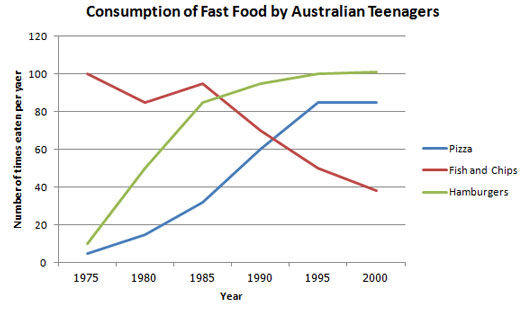
There are three basic things you need to structure an IELTS writing task 1.
- Introduce the graph
- Give an overview
- Give the detail
We’ll look at each of these in turn.
Introduce the Graph
You need to begin with one or two sentences that state what the IELTS writing task 1 shows. To do this, paraphrase the title of the graph, making sure you put in a time frame if there is one.
Here is an example for the above line graph:
The line graph compares the fast food consumption of teenagers in Australia between 1975 and 2000, a period of 25 years.
You can see this says the same thing as the title, but in a different way.
Give an Overview
You also need to state what the main trend or trends in the graph are. Don’t give detail such as data here – you are just looking for something that describes what is happening overall.
One thing that stands out in this graph is that one type of fast food fell over the period, whilst the other two increased, so this would be a good overview.
Here is an example:
Overall, the consumption of fish and chips declined over the period, whereas the amount of pizza and hamburgers that were eaten increased.
This covers the main changes that took place over the whole period.
You may sometimes see this overview as a conclusion. It does not matter if you put it in the conclusion or the introduction when you do an IELTS writing task 1, but you should provide an overview in one of these places.
Give the Detail
You can now give more specific detail in the body paragraphs.
When you give the detail in your body paragraphs in your IELTS writing task 1, you must make reference to the data.
The key to organizing your body paragraphs for an IELTS writing task 1 is to group data together where there are patterns . To do this you need to identify any similarities and differences .
Look at the graph – what things are similar and what things are different? As we have already identified in the overview, the consumption of fish and chips declined over the period, whereas the amount of pizza and hamburgers that were eaten increased.
So it is clear that pizza and hamburgers were following a similar pattern, but fish and chips were different. On this basis, you can use these as your ‘groups’, and focus one paragraph on fish and chip and the other one on pizza and hamburgers.
Here is an example of the first paragraph:
In 1975, the most popular fast food with Australian teenagers was fish and chips, being eaten 100 times a year. This was far higher than Pizza and hamburgers, which were consumed approximately 5 times a year. However, apart from a brief rise again from 1980 to 1985, the consumption of fish and chips gradually declined over the 25 year timescale to finish at just under 40.
As you can see, the focus is on fish and chips. This does not mean you should not mention the other two foods, as you should still make comparisons of the data as the questions asks.
The second body then focuses on the other foods:
In sharp contrast to this, teenagers ate the other two fast foods at much higher levels. Pizza consumption increased gradually until it overtook the consumption of fish and chips in 1990. It then levelled off from 1995 to 2000. The biggest rise was seen in hamburgers as the occasions they were eaten increased sharply throughout the 1970’s and 1980’s, exceeding that of fish and chips in 1985. It finished at the same level that fish and chips began, with consumption at 100 times a year.
Full Model Answer:

The line graph compares the fast food consumption of teenagers in Australia between 1975 and 2000, a period of 25 years. Overall, the consumption of fish and chips declined over the period, whereas the amount of pizza and hamburgers that were eaten increased.
(194 words)
Now you've been through this first introductory lesson, you can go to the next lesson or start viewing some model answers.
More Task 1 Academic Lessons:
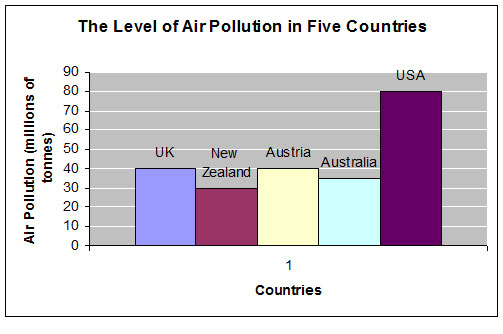
Learn Compare and Contrast Language for IELTS Graphs
Compare and Contrast Language: In the academic IELTS task 1, you have to know the right language if you want to get a band 7 or higher. Practice your IELTS language for bar charts in this task 1 writing lesson.
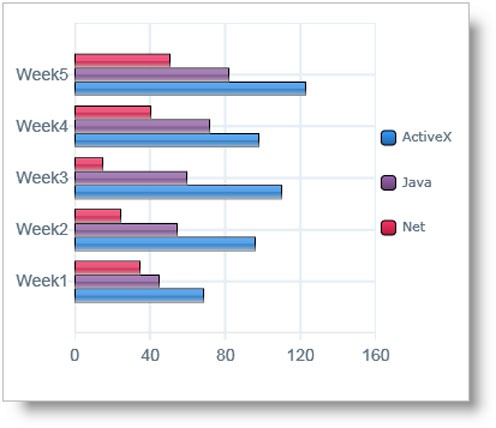
Describing an IELTS task 1 graph over time
This lesson shows you how to write an IELTS task 1 graph or chart that is over time.

Take an IELTS Quiz to test your IELTS knowledge
IELTS Quizzes to test and train you on the writing task and task 2 of the IELTS test. Gap fills and multiple choice.
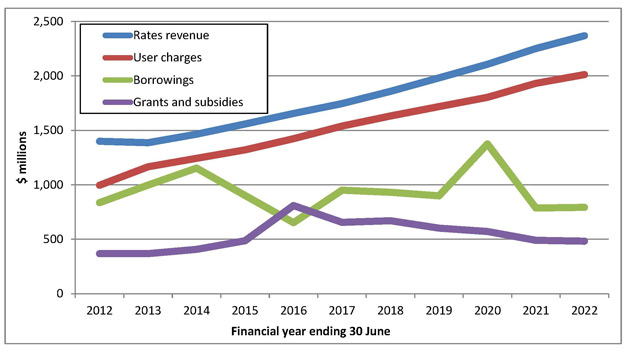
Writing Tips for a Graph in the Future in IELTS Academic
Graph in the future: Sometimes graphs in IELTS refer to a future time. You must know the language to write about these. In this lesson, learn how to write about an IELTS graph in the future. Getting the tenses right is an important part of the IELTS writing task 1.
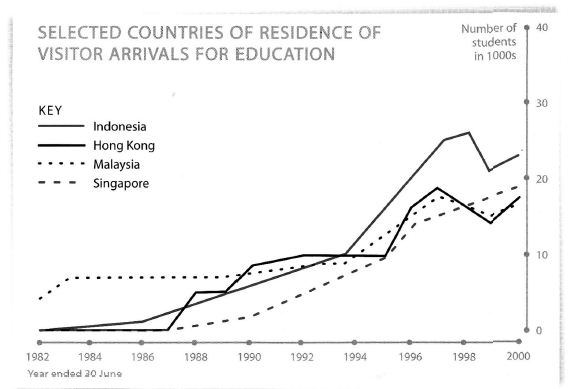
Tips for Organising an IELTS Line Graph
Organising an IELTS Line Graph - This lesson shows you have to improve the coherency of your graph in order to achieve a high band score.
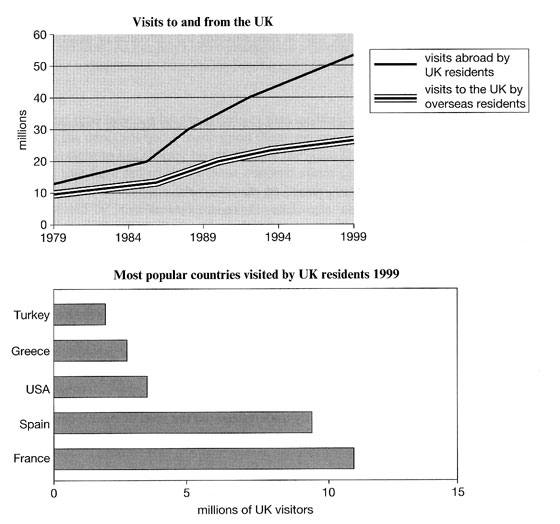
IELTS Bar and Line Graph: How to describe two graphs together
This Bar and Line Graph example shows you how you can write about two charts together in the IELTS test for task 1, with strategies and techniques.
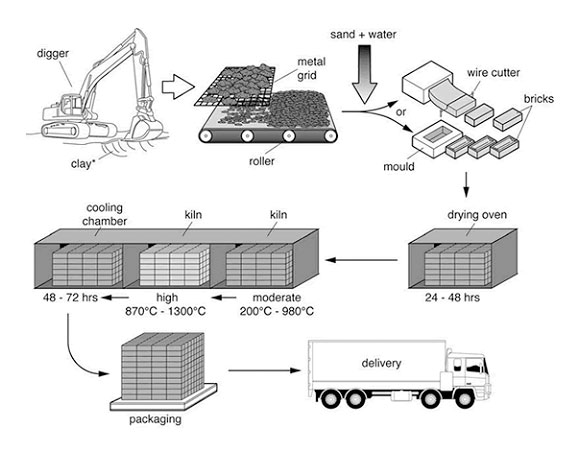
IELTS Process Diagram Strategies and Tips
IELTS Process Diagram: In task 1 of IELTS writing you usually have to describe some kind of graph or chart. But sometimes you get a process. It is therefore crucial that you know how to do this. This easy to follow lesson explains how.

Describing IELTS Graphs: Tips to avoid a common mistake
IELTS Graphs: A common mistake In IELTS graphs is to get the subject of the graph wrong. This lesson explains how this mistake is made and show you what you need to do to avoid it. There is a also a practice exercise.
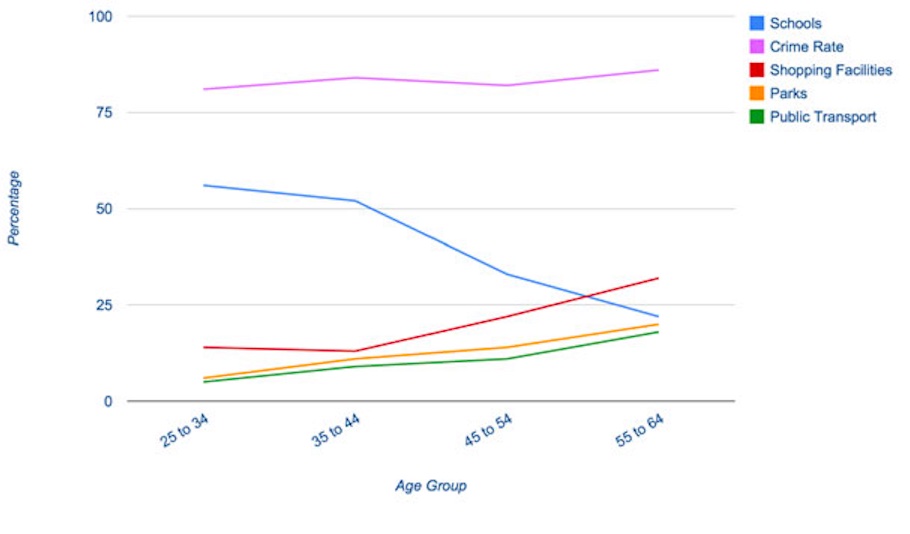
IELTS Task 1 Line Graph Structure Using Groups
For an IELTS Task 1 Line Graph there are different ways to organise your answer. Grouping information is a good way to get a logically structured response.
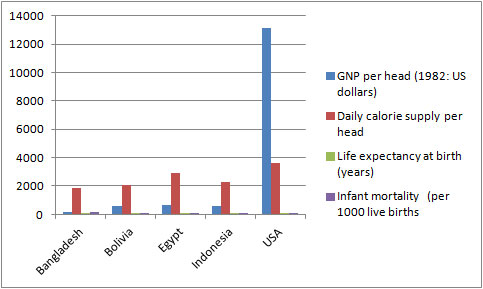
IELTS Table: Tips and techniques for a high score.
IELTS Table advice for a high score. Learn how to describe an IELTS table, which is just another way to present data.
Which Tenses for IELTS are the Most Important?
Candidates often ask which tenses for IELTS are needed in order to do well in the exam. This lesson goes through the grammar tenses and how they apply to the test.
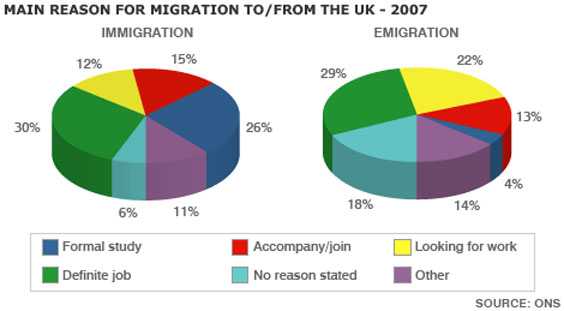
IELTS Pie Chart Strategies and Tips for a Band 7, 8 or 9
This IELTS pie chart lesson provides you with tips and advice on how to describe an IELTS Pie Chart in order to get a Band 7, 8 or 9.
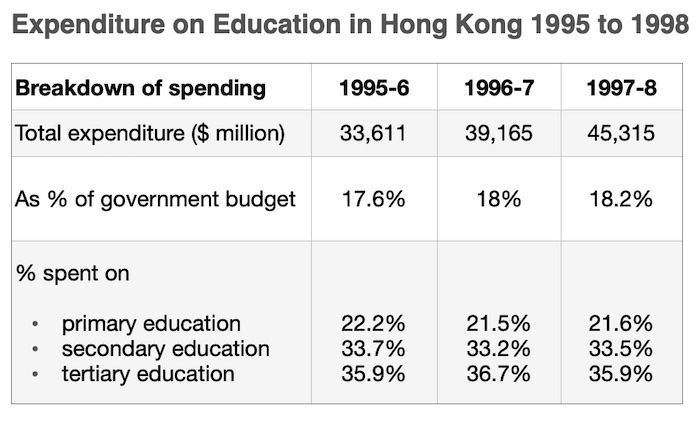
Describing Graph Trends Using the Language of Change
Describing graph trends: In IELTS you must know how to describe the trends that you see in the graph you are given. This lesson provides practice with some common language used to describe trends.
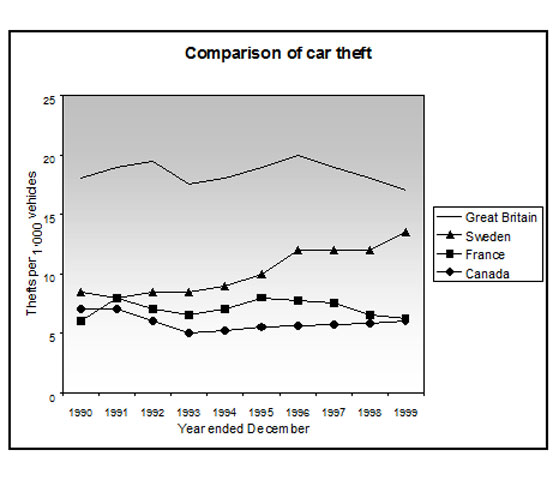
Prepositions in Graphs Quiz: Between; from; to; at; of; in; with; by
Prepositions in Graphs: Practice using prepositions in the IELTS test. View a model answer and practice using a gap fill.
Any comments or questions about this page or about IELTS? Post them here. Your email will not be published or shared.
Before you go...
Check out the ielts buddy band 7+ ebooks & courses.

Would you prefer to share this page with others by linking to it?
- Click on the HTML link code below.
- Copy and paste it, adding a note of your own, into your blog, a Web page, forums, a blog comment, your Facebook account, or anywhere that someone would find this page valuable.
Band 7+ eBooks
"I think these eBooks are FANTASTIC!!! I know that's not academic language, but it's the truth!"
Linda, from Italy, Scored Band 7.5

IELTS Modules:
Other resources:.
- All Lessons
- Band Score Calculator
- Writing Feedback
- Speaking Feedback
- Teacher Resources
- Free Downloads
- Recent Essay Exam Questions
- Books for IELTS Prep
- Useful Links

Recent Articles
Decreasing House Sizes Essay
Apr 06, 24 10:22 AM

Latest IELTS Writing Topics - Recent Exam Questions
Apr 04, 24 02:36 AM

IELTS Essay: English as a Global Language
Apr 03, 24 03:49 PM

Important pages
IELTS Writing IELTS Speaking IELTS Listening IELTS Reading All Lessons Vocabulary Academic Task 1 Academic Task 2 Practice Tests
Connect with us
Copyright © 2022- IELTSbuddy All Rights Reserved
IELTS is a registered trademark of University of Cambridge, the British Council, and IDP Education Australia. This site and its owners are not affiliated, approved or endorsed by the University of Cambridge ESOL, the British Council, and IDP Education Australia.

IELTS Writing Task 1: Line Graph with Sample Answer
- Post author By IELTSAcademic
- Post date June 13, 2012
- 2 Comments on IELTS Writing Task 1: Line Graph with Sample Answer
IELTS Writing Task 1: Question
You might see a line graph like this one in Task 1. The ability to describe changes over time is a key skill in line graph tasks.
The diagram shows the consumption of renewable energy in the USA from 1949-2008. Write a 150-word report for a university lecturer identifying the main trends and making comparisons where relevant.
IELTS Writing Task 1: Model Answer
The line graph shows growth in the consumption of renewable energy during the period 1949-2008 in the USA. The results are also broken down by source.
The first thing to note is that renewable energy use more than doubled over the period, with particularly strong growth in biofuels. This sector did not exist in 1980 but experienced a steep rise during the 2000s to over one quadrillion Btu per year. This made biofuels a serious challenger to both wood and hydroelectric power, which both saw only limited growth overall. The former grew steadily between 1975 and 1985, but then slipped back to around its original level of 1.8 quadrillion Btu. The latter began the period at the same level as wood but experienced more substantial growth. However, it also fell back to around 2 quadrillion Btu, with a particularly sharp drop in the late 1990s.
Finally, wind power emerged late in the period but showed a gradual rise to around 0.5 quadrillion Btu, suggesting that it, along with biofuels, will replace wood and hydroelectricity as the main sources of renewable every in the future.
(184 words, IELTS 8.0)
Why does this Task 1 answer get an IELTS Band 8 score?
Task achievement: The model answer describes the overall trend first, followed by an analysis of the different energy sources. Numerical evidence is used sparingly to illustrate the trends. The main trends are used as the basis of a prediction in the final sentence.
Coherence and cohesion: Trends are explained in general terms first, followed by supporting figures. Some energy sources are grouped together for ease of understanding. It and this are used throughout as cohesive devices, and the writer uses the former and the latter to refer back to information in a previous sentence.
Lexical resource: The writer uses a wide range of vocabulary to describe change, including adjectives and adverbs such as limited , substantial and particularly sharp , and verbs such as doubled , slipped and emerged .
Grammatical range and accuracy: The model answer is free from grammatical errors. Sentence forms are complex and include relative clauses and linking words such as with . The candidate makes use of past, present and future tenses. Punctuation is also used carefully and accurately throughout.
Teacher’s Notes

You may also like:

Comments are closed.
Useful Vocabulary for Writing an IELTS Graph Essay

When it comes to IELTS writing task 1, 25% of your marks are for the range of words you use. That means IELTS graph vocabulary is a very important component to review as you prepare for the Writing Task 1. You can start by checking out this IELTS writing task 1 vocabulary guide . And below, I’ll provide an overview of words and useful phrases to incorporate into your writing so that you can get top marks on the lexical resource category and a high band score overall. Basically, the better your IELTS writing chart vocabulary, the higher score you’ll get. It’s not hard, but there is a clear formula to doing well.
How to Use IELTS Graph Vocabulary in Writing Task 1
Because IELTS writing task 1 involves describing a graph or chart of some type, it will help to have a handle on IELTS writing chart vocabulary — words and phrases that help you write about the information on the chart or graph.
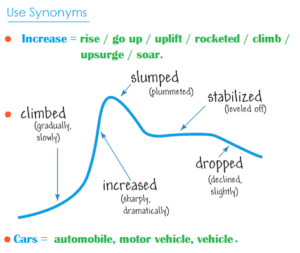
How are graphs described in IELTS? Let’s walk through the best vocabulary for the task, step by step.
1. Start With Introduction Phrases
Often ESL students start their essay with ‘The graph shows…’. While this is fine, the verb ‘shows’ could be replaced by a more exciting and high-level vocabulary word. Here are four different prompts to start your essay:

- The graph illustrates the trends in…
- The graph reveals information about the changes in…
- The graph provides the differences between…
- The graph presents how X has changed over a period of…
- DO NOT write the word below or above in your introduction. i.e. The graph above/below shows…
2. Add Suitable Adverbs
Adverbs help express a relation of place, time, circumstance, manner, cause, and degree, and can greatly add some color and interest to your writing as well as show off your range of vocabulary. Unlike adjectives (which describe nouns), adverbs describe verbs, or actions. Here’s a great list of adverbs to use:
3. Use Appropriate Synonyms
Again using a variety of nouns and verbs for words like rise and fall will help increase your overall score. Here are some suggestions:
4. Add Time Phrases
Below are some excellent time phrases with sentence examples:
Using IELTS Graph Vocabulary in a Model Essay
Look at the sample IELTS writing Task 1 graphs on the British Council website . Below is my model answer with useful words in bold:
The bar charts illustrate the trends in computer ownership, with a further classification by level of education, from 2002 to 2010.
Over the period, it can be observed that there was a significant surge in the percentage of the population that owned a computer. In the year 2002, only about 58% of the population owned a computer, whereas by 2010 , this gradually increased to where over three-quarters of individuals had a home computer.
Looking at the information by level of education reveals that higher levels of education correspond to higher levels of computer ownership in both of those years. In 2002, a significantly low percentage of the population who did not finish high school had a computer, but this figure skyrocketed by 2010, going from 15% to over 40%. There were also dramatic climbs , of approximately 30 percentage points, for those with a high school diploma or an unfinished college education (reaching 65% and 85%, respectively, in 2010).
To conclude, during the last decade, there has been a substantial growth in computer ownership across all educational levels.
Other IELTS Graph Vocabulary Resources
Keep in mind that IELTS writing task 1 may contain one of several different types of infographic: a bar chart, pie chart, line graph, diagram, etc. Regardless of the type, you’ll want to have a good handle on IELTS writing chart vocabulary.
For more specific guides to the different kinds of graphs, charts, and graphics you may find on IELTS writing task 1, check out the following resources:
- How to Describe a Bar Chart
- How to Describe a Pie Chart
- How to Describe a Map
- How to Describe a Process Diagram
You can also check out Magoosh’s IELTS linking words PDF for transitions between ideas. Hopefully you’ll start to incorporate some of these key words and phrases, as well as the above suggestions, in your IELTS Task 1 Writing. If you still don’t feel comfortable doing so, consider dedicating more time to your IELTS studies with Magoosh’s fun, engaging IELTS prep for extra practice.

Eliot Friesen-Meyers is the Senior Curriculum Manager for Magoosh IELTS and TOEFL. He attended Goshen College (B.A.), New York University (M.A.), and Harvard University (M.T.S.), gaining experience and skills in curriculum development, ESOL instruction, online teaching and learning, and IELTS and TOEFL test prep education. Eliot’s teaching career started with Literacy Americorps in Pittsburgh, Pennsylvania, and later, taught ESL programs at Northeastern University, University of California-Irvine, and Harold Washington College. Eliot was also a speaker at the 2019 TESOL International Conference . With over 10 years of experience, he understands the challenges students face and loves helping them overcome those challenges. Come join Eliot on Youtube , Facebook , and Instagram . Recent blog posts Complete Guide to IELTS Writing Task 1 Complete Guide to IELTS Writing Task 2
View all posts
More from Magoosh

11 responses to “Useful Vocabulary for Writing an IELTS Graph Essay”
I would like to get sample of all types of graph eassy
IELTS Liz offers a pretty good range of graphs and charts for IELTS Writing Task 1 (Academic) . You can also get a nice selection of these on the official IELTS websites . And last but not least, Magoosh offers a good selection of these types of questions with a Magoosh IELTS Premium subscription. 🙂
Thank you Magoosh for the comprehensive guide. I’m a subscriber to you GMAT course and is now checking out IELTS.
Wanna ask, I read and watched many other sources that says we should not write a conclusion. However, yours did.
So, is it permissible or not permissible?
The concluding sentence is optional–if you have time to write a concluding sentence after writing and reviewing your essay, then it looks good to have a concluding sentence. If you don’t have time to write a concluding essay or you’d rather focus on other parts of your essay, then it’s totally fine to leave it out. You can read more about this in our Complete Guide to IELTS Academic Writing Task 1.
“Growth” is not an noun? Because in the board it’s saying that it is a verb
Thanks for pointing this out! It seems like a mistake on our part. We should probably change that to “grow”. I’ll make a note for our writing team to make this change 🙂
I appreciate you very much. Your blog on Useful Words for Writing an IELTS Graph Essay was the outstanding blog ever. You have given so much good information about the new english words & grammar in your post, which will help me in future. Always keep data like this on your website
I have two significant questions. The first one is related to the unit of measurement in over view. Is it academic? And the second one is of conclusion. Do we need to write conclusion?
Hi Aakash, I’m afraid I don’t understand your first question. Can you please provide some more information? For your second question: a conclusion is not necessary. You can add one if you’d like, but it’s more important to spend time analyzing the graph.
This is one of the best among the essay I’ve read recently.
Thanks for the feedback! 🙂
Leave a Reply Cancel reply
Your email address will not be published. Required fields are marked *
CHARTS AND GRAPHS ESSAY EXAMPLES
IELTS Writing Task 1 Academic Charts And Graphs Essay Examples
View High Band Score Examples Of IELTS Writing Task 1 Academic Charts And Graphs Essays
IELTS Writing Task 1 – Table Essay Example 3
IELTS Writing Task 1 Academic table essay example that is a band score 8. The question is: The table below gives information about the problems faced by children in two primary schools in 2005 and 2015. Take a look at the sample answer
IELTS Writing Task 1 – Table Essay Example 2
IELTS Writing Task 1 Academic table essay example that is a band score 8. The question is : The table illustrates the proportion of monthly household income five European countries spend on food and drink, housing, clothing, and entertainment. Take a look at the sample answer.
IELTS Writing Task 1 – Table Essay Example 1
IELTS Writing Task 1 Academic table essay example that is a band score 8. The question is: The following table gives statistics showing the aspects of quality of life in five countries. Take a look at the sample answer.
IELTS Writing Task 1 – Pie Chart Example Essay 1
IELTS Writing Task 1 Academic pie chart essay example that is a band score 8. The question is: The chart below shows how much money is spent in the budget on different sectors by the UAE government in 2000. Take a look at the sample answer.
IELTS Writing Task 1 – Line Graph Essay Example 2
IELTS Writing Task 1 Academic line graph essay example that is a band score 8. The question is: The line graph illustrates the amount of spreads consumed from 1981 to 2007, in grams. Take a look at the sample answer.
IELTS Writing Task 1 – Line Graph Essay 1
IELTS Writing Task 1 Academic line graph essay example that is a band score 8. The question is: The line graph below shows changes in the amount and type of fast food consumed by Australian teenagers from 1975 to 2000. Take a look at the sample answer.
IELTS Writing Task 1 – Bar Chart Example Essay 3
IELTS Writing Task 1 Academic bar chart essay example that is a band score 8. The question is: The chart shows the percentage of drugs taken by girls and boys in a school in New Zealand. Take a look at the sample answer.
IELTS Writing Task 1 – Bar Chart Example Essay – 2
IELTS Writing Task 1 Academic bar chart essay example that is a band score 8. The question is: The chart below shows the number of men and women in further education in Britain in three periods and whether they were studying full time or part-time. Take a look at the sample answer.
IELTS Writing Task 1 – Bar Chart Essay Example 1
IELTS Writing Task 1 Academic bar chart essay example that is a band score 8. The question is: The chart below gives information about Someland’s main exports in 2005, 2015, and future projections for 2025. Take a look at the sample answer.
Related Posts

IELTS Discussion Essay Sample 2 – Economics
IELTS Writing Task 2 discussion essay example that is a band score 8. The question…
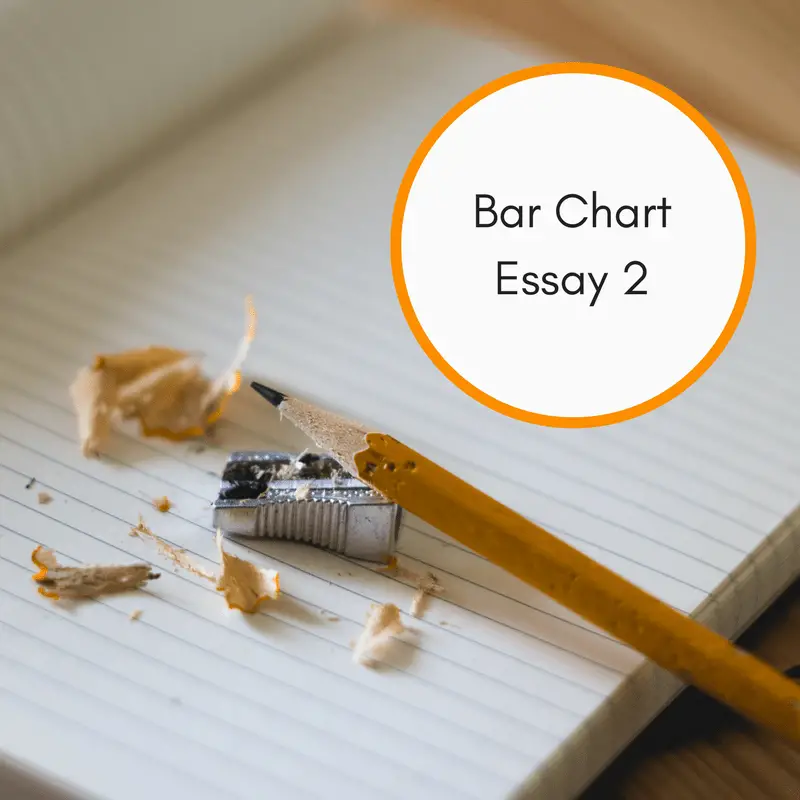
IELTS Writing Task 1 Academic bar chart essay example that is a band score 8.…

Number of Books Read by Men and Women at Burnaby Public Library

Information about International Tourist Arrivals in Five Countries - Task 1 Line Graph

Radio and Television Audiences of United Kingdom Throughout the Day in the Year 1992 - Task 1 Line Graph

Number of Visitors to Three London Museums Between June and September 2013 - Task 1 Line Graph

Consumption of Fish and Some Different Kinds of Meat in a European Country - Task 1 Line Graph

Unemployment Rates in the US and Japan between March 1993 and March 1999 - Task 1 Line Graph

Differences in Wheat Exports over three Different Areas - IELTS Task 1

Information on Cinema Attendance in the UK - Task 1 Line Graph

Rate of Smoking Per 1000 People in Someland from 1960 to 2000 - Task 1 Line Graph

Number of Visits to Two New Music Sites on the Web - Task 1 Line Graph Sample Report

Estimated Sales of Gold in Dubai for 12 Months in 2002 in Millions of Dirhams - Task 1 Line Graph Sample Report

Underground Station Passenger Numbers in London - Task 1 Line Graph Sample Reports
- Skip to primary navigation
- Skip to main content
- Skip to primary sidebar
- Skip to footer

IELTS Advantage
IELTS Preparation Courses
IELTS Bar Chart Sample Essay
Static or Dynamic?
Before writing an IELTS task 1 bar chart or line graph answer it is important that we analyse the question correctly. Taking a few minutes to do this will help us write a clear answer that fully responds to the question. Just what the examiner wants us to do.
The first thing we need to do is decide if the bar chart is static or dynamic. Static means that the data comes from one point in time. Dynamic means the data comes from more than one point in time.
Whether a chart is static or dynamic will affect the information we choose to include in our answer and the kind of language (tense, grammar etc.) we use.
If it is dynamic we will have to compare the different times and comment on the general trends over the time period.
If it is static we will have to compare the different variables, in this case countries, car price, GDP and time it takes for one person to buy a car.
Main Features
Every IELTS academic task 1 question asks us to ‘select and report the main features’.
This means that we have to not only pick the most significant information from the graph and include it in our essay, but also decide which information is not important and should therefore not be included in our essay. One of the biggest mistakes you can make in task 1 is including all the information you see.
So which information should you choose?
You should look for:
- highest/lowest values
- biggest differences
- similarities
- significant exceptions
- anything else that really stands out
There are 3 main features in this graph
1) It takes over 26 years for a Vietnamese person to buy a car.
2) Vietnam has the second highest average costs but the second lowest wages.
3) Cost of a car in Singapore is nearly 3 times the next most expensive.
I advise my students to follow a basic four paragraph structure for these kinds of questions.
Paragraph 1
Paraphrase the question using synonyms.
Paragraph 2
Provide an overview of the main features. No need to include any data in this paragraph, just tell the examiner what is happening in general terms. If you had to describe the main features in two sentences, what would you say?
Paragraph 3
This is where we get more specific and use data. Take 2 of the main features (from your overview) and describe them in detail using data from the chart.
Paragraph 4
Simply do the same thing as you did in paragraph 3, but with two other main features (from your overview).
Sample Answer
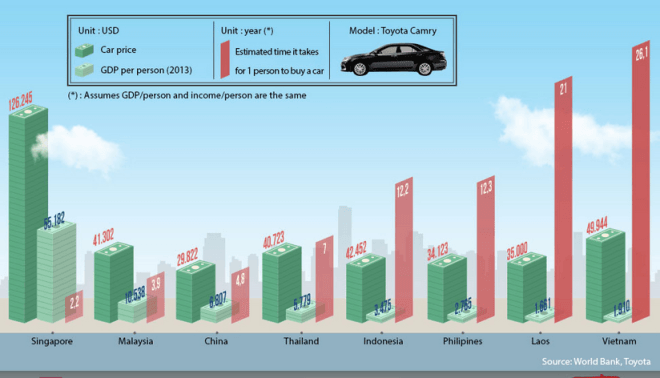
The graph compares the GDP per capita, cost of a Toyota Camry and approximate length of time it takes for 1 citizen to purchase that mode of transport in eight Asian countries.
Despite having the second lowest average yearly income, it costs more to buy this car in Vietnam than in all but one other Asian nation. It also takes significantly longer for a standard person to buy an automobile in Vietnam than in any other state in Asia. On the other end of the scale, Singaporeans have to pay nearly three times more for their cars than the Vietnamese and it takes them the least amount of time to afford a motor vehicle.
It costs $49,944 to buy a Toyota Camry in Vietnam, but this dwarfs the average yearly income per person at just $1,910. It would therefore take a normal man or woman 26.1 years to save up for that particular car.
This is in contrast to Singapore where it costs $126,245 for that model of motorcar, however the average salary is much greater at $55,182. This means that it generally takes just over 2 years for a typical individual from Singapore to acquire this vehicle.
(200 words) Band 9.
It should be noted that this is not a real IELTS task 1 question. This is just a chart that I saw on the internet, but it allowed me to make a very important point- you don’t have to mention everything on the graph. I only talked about 2 out of the 8 countries and I still wrote 200 words and answer the question fully. The key is finding the most significant data and not talking about anything else. Don’t worry, you won’t lose marks for not talking about everything, quite the opposite.
This graph is also good for demonstrating how important it is to vary your vocabulary. There were four words that could have been overused in this essay- car, average, country and people. Instead of repeating them over and over again I used synonyms to show the examiner I have a wide vocabulary and gain extra marks. Here are the synonyms:
Car- Toyota Camry- automobile- vehicle- motor vehicle- motorcar
Average- approximate- normal- typical- standard
Country- countries- nation- state
People- citizen- man or woman- individual
Next time you see a chart or graph in a newspaper, in a textbook or on the internet, think about what the main features are and what common words would you have to vary with synonyms.
I hope you have found these tips useful. If you have any questions, let me know below.
For more band 9 sample essays check out our task 1 sample essay page.
About Christopher Pell
My name is Christopher Pell and I'm the Managing Director of IELTS Advantage.
I started IELTS Advantage as a simple blog to help 16 students in my class. Several years later, I am very humbled that my VIP Course has been able to help thousands of people around the world to score a Band 7+ in their IELTS tests.
If you need my help with your IELTS preparation, you can send me an email using the contact us page.
PenMyPaper: a student-friendly essay writing website
We, at PenMyPaper, are resolute in delivering you professional assistance to write any kind of academic work. Be it marketing, business, or healthcare sector, we can prepare every kind of draft efficiently, meeting all the points of the question brief. Also, we believe in 'research before drafting'. Any work without ample research and evidence will be a flawed one and thus we aim to make your drafts flawless with exclusive data and statistics. With us, you can simply relax while we do the hard work for you.
- Expository Essay
- Persuasive Essay
- Reflective Essay
- Argumentative Essay
- Admission Application/Essays
- Term Papers
- Essay Writing Service
- Research Proposal
- Research Papers
- Assignments
- Dissertation/Thesis proposal
- Research Paper Writer Service
- Pay For Essay Writer Help
Customer Reviews

IMAGES
VIDEO
COMMENTS
Here is the 5 steps process I recommend for planning and writing IELTS line graph essays: 1) Analyse the question. 2) Identify the main features. 3) Write an introduction. 4) Write an overview. 5) Write the details paragraphs. I'm going to take you through the whole process step-by-step as we work on a practice question.
To make the best use of your time it's important to write with a clear structure, focus on the most important trend or trends, choose appropriate vocabulary and avoid common mistakes. In this tutorial, we have a band range 6.5 / 7 academic task 1 IELTS line graph example essay graded by an ex-IELTS examiner (on our team of essay correctors).
A sample answer to the Recent IELTS Graph 2: Question: The charts below show the growth in the population in some of the world's largest cities as well as the population distribution in urban and rural areas. Summarize the information by selecting and reporting the main features, and make comparisons where relevant.
IELTS Line Graph Examples - Model Answer. The line graph compares the number of cars stolen for every 1000 vehicles in four countries from 1990 to 1999. Overall, it can be seen that car thefts were far higher in Great Britain than in the other three counties throughout the whole time frame. To begin, car thefts in Sweden, France and Canada ...
IELTS Line Graph Model (Band Score 9) This model line graph for IELTS is estimated at band score 9. The model answer below is for IELTS writing task 1 academic paper. Use this sample writing as a template for structure, key features and language for any IELTS line graph. There are also some tips given below to guide you and help you understand ...
Tips for IELTS Writing Task 1 Line Graph 2022. In the introduction part, you can paraphrase the question asked or the topic of the essay. When you explain the overall trend, identify the main feature and explain it. Ensure that each paragraph has examples that are percentages or numbers to support the sentence written as an explanation.
If the line graph contains many lines and a lot of movement, be selective. You are being marked on your ability to select key features. Don't spend more than 20 mins on task 1. You will need a full 40 mins for task 2. Write 150 words or more. Aim for about 160-190 words. Don't write under the word count.
The structure of your IELTS Task 1 line graph typically consists of the following components -. Introduction - Provide a brief overview of the graph's subject, including the timeframe and data sources. Overview - Summarise the main trends or patterns evident in the line bar graph. Mention the highest and lowest points, significant increases or ...
Real-world Examples: Where relevant, connect the data in the line graph to real-world examples to add context and make your essay more relatable. Common Mistakes to Avoid: How To Write a Line Graph Essay. Just Describing, Not Explaining: Don't simply describe the trends in the graph. Analyze them and explain why they might be happening.
For example, my first line for this essay will be: The line graph shows information about sales in an unnamed bakery in the year 2014. Speaking of paraphrasing, you should also not include any reference to "below." Whilst the task description is above the graph, your essay will be on a separate piece of paper or on a computer screen.
Sample Answer for Line Graph #1: More sample answers: The provided graph illustrates the evolution of birth and death rates in New Zealand from 1901 to 2101. Overall, the birth rate exhibits a marked volatility with a pronounced surge in the mid-20th century before a decline, whereas the death rate remains fairly consistent with a moderate ...
The graph below shows how people buy music. Summarise the information by selecting and reporting the main features, and make comparisons where relevant. The graph illustrates trends in music buying habits between 2011 and 2018. It presents three different methods: streaming, downloading and buying CDs. Overall, both downloads and physical sales ...
IELTS Writing Line Graph Task 1: How to Answer. Line graphs or Line charts are periodical graphs. Which means they show values of two constants over a period of time. These graphs usually indicate the pattern of growth of the given subjects. Line graphs can be increasing, decreasing or stable. As a part of your task, you must analyse the given ...
Introduce the Graph. You need to begin with one or two sentences that state what the IELTS writing task 1 shows. To do this, paraphrase the title of the graph, making sure you put in a time frame if there is one. Here is an example for the above line graph: The line graph compares the fast food consumption of teenagers in Australia between 1975 ...
IELTS Writing Task 1: Question. You might see a line graph like this one in Task 1. The ability to describe changes over time is a key skill in line graph tasks. The diagram shows the consumption of renewable energy in the USA from 1949-2008. Write a 150-word report for a university lecturer identifying the main trends and making comparisons ...
Using IELTS Graph Vocabulary in a Model Essay. Look at the sample IELTS writing Task 1 graphs on the British Council website. Below is my model answer with useful words in bold: The bar charts illustrate the trends in computer ownership, with a further classification by level of education, from 2002 to 2010.
Take a look at the IELTS Writing Task 1 Academic essay example below >>. *This line graph question and answer were provided by a student. IELTS Achieve did not design this question*. The graph gives information about the number of spreads (Margarine, low fat & reduced spread and butter) consumed from the year 1981 up to 2007.
IELTS Writing Task 1 - Line Graph Essay 1. IELTS Writing Task 1 Academic line graph essay example that is a band score 8. The question is: The line graph below shows changes in the amount and type of fast food consumed by Australian teenagers from 1975 to 2000. Take a look at the sample answer.
A line graph contains both an x-axis (the horizontal base) and a y-axis (the vertical spine). The x-axis is generally used to mark the passage of time - in the example above, the four quarters of ...
Dive into our expansive compilation of "Task 1 Line Graph Band 9 Samples", meticulously curated by ex-IELTS examiners at IELTS Luminary. With each "Task 1 Line Graph Band 9 Sample", unravel detailed insights and ace the line graph segment effortlessly. Elevate your IELTS preparation journey with these top-tier "Task 1 Line Graph Band 9 Samples". Whether you're a beginner or looking for ...
Before writing an IELTS task 1 bar chart or line graph answer it is important that we analyse the question correctly. Taking a few minutes to do this will help us write a clear answer that fully responds to the question. Just what the examiner wants us to do. The first thing we need to do is decide if the bar chart is static or dynamic.
Example Of Line Graph Analysis Essay, What If Essay Without Using I Statement, Thesis On Inventory Control, An Experience Ess, Advantages And Disadvantages Of Text Messaging Essay, Is Literature Review A Research Methodology, My Aim In Life Essay 1000 Words User ID: 231078 / Mar 3, 2021
Example Of Line Graph Analysis Essay, Creative Writing Workshop Ottawa, Esl Scholarship Essay Writing Websites For Phd, Instagram Influencer Case Study, Example Essay About Introducing Biology, Cover Letter For Airline Ticket Agent, For And Against Essay About Living In The City Centre